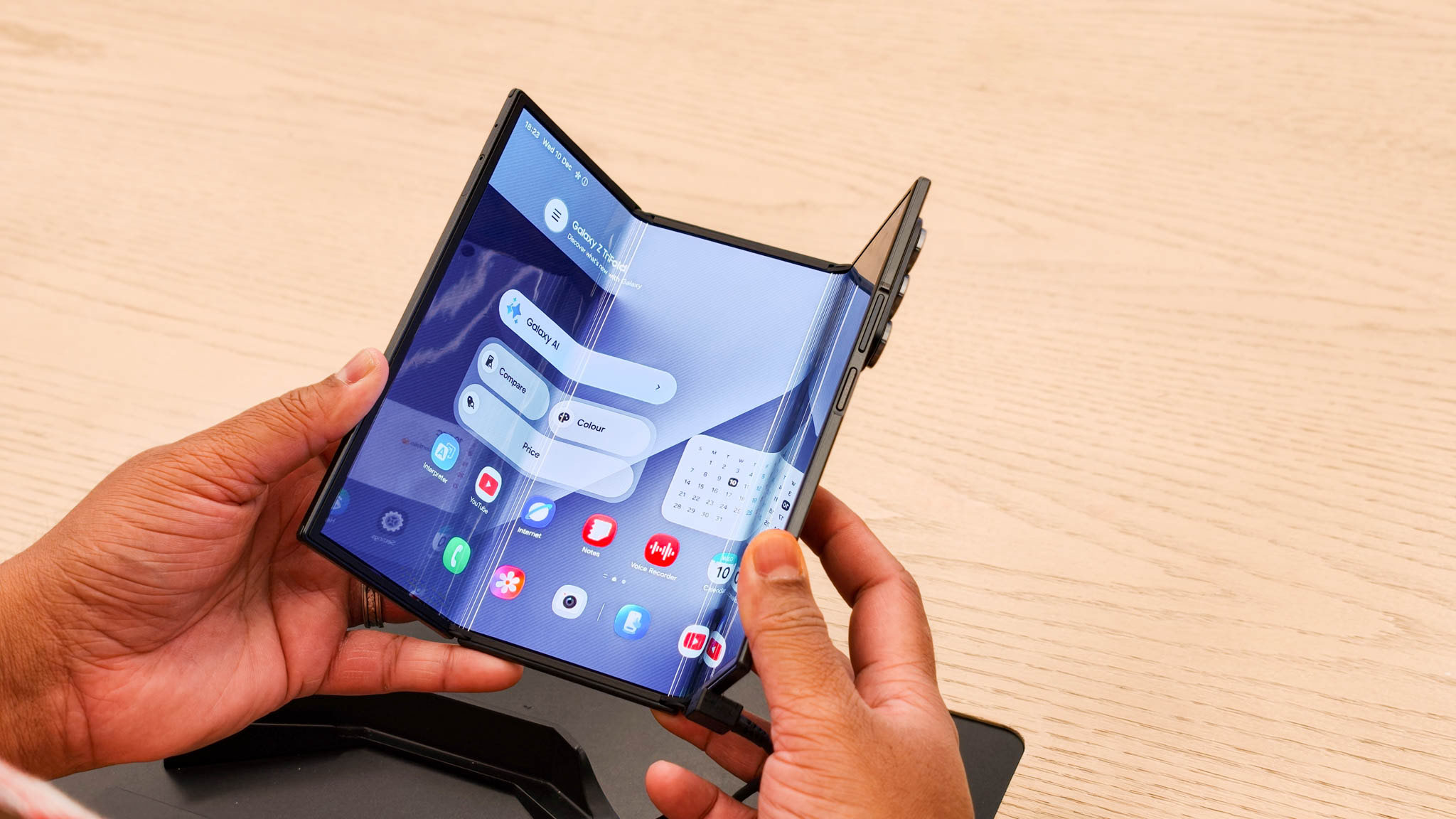Google Pixel event 2022 live blog: Pixel Watch, Pixel 7, and Pixel Tablet
New phones, a new watch, and a new hybrid tablet!
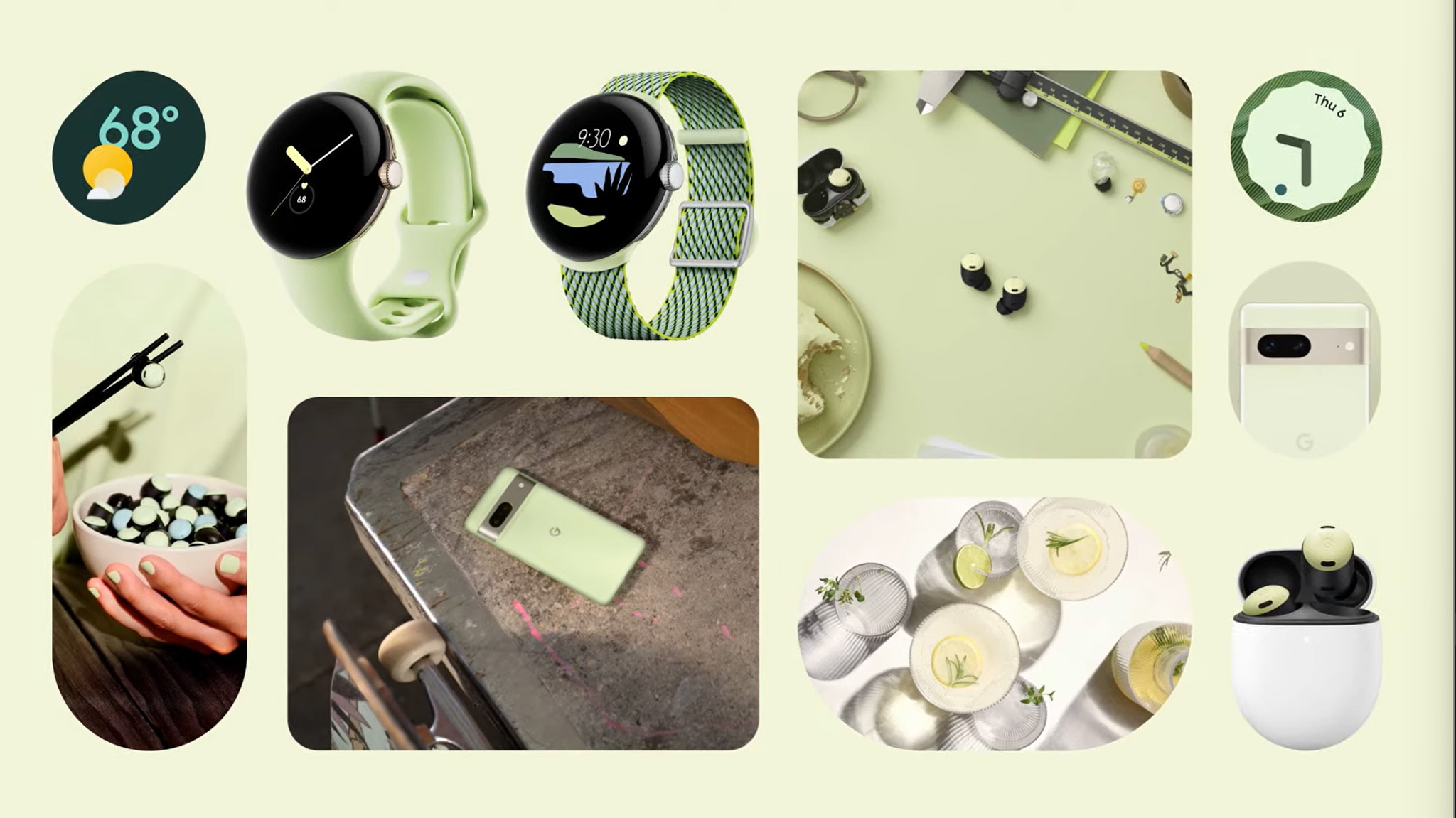
Yesterday, at a Made By Google event in Brooklyn, NY, Google announced the Pixel 7, Pixel 7 Pro, Pixel Watch, and Pixel Tablet. We got the chance to be at the event venue watching Google unveil all of its new products live and get our hands on almost everything Google announced. The live blog ran throughout the day yesterday — before, during, and after the event was over — and we've still got several things to talk about today!
If you want to watch the presentation in its entirety, you can replay it on the Google store website and YouTube.
Folks, it's Shruti typing, AC's managing editor. I'll be on until tomorrow when the event goes live and honestly I already feel like I need a drink...maybe that's how I'll find another device that was "accidentally" left at a bar. Lmao. JK. Anyway, Andrew Myrick helped me write a bunch of stuff, so I want to kick things off.
It’s been a long five months since the Pixel 7, Pixel 7 Pro, Pixel Watch, and even the Pixel Tablet were first teased at I/O 2022. Since then, we’ve seen an iPhone 4-like debacle with a Pixel Watch left in a bar along with more than a few different people getting some hands-on time with Pixel 7 and 7 Pro prototypes. For whatever reason, it seems that Google just can’t figure out how to turn off that leaky faucet every year.
Even more excitedly, Google is finally, and we mean FINALLY set to release its first smartwatch. This has been rumored for years, and looks like it will be the perfect complement to your shiny, new Pixel 7 (or any Android phone). Since showing it off at I/O, Google has provided a few teasers here and there, complete with a “Design of Google Pixel Watch” trailer video, giving us an idea as to how the design came to be.
Shortly before Google I/O 2022 kicked off, Android Central was the first to report on and provide real-world pictures of Google’s first smartwatch. This confirmed a few things about the watch itself, such as the rotating crown, and two hidden buttons to provide various methods for interacting with the wearable. The provided images also gave us an indication of just how the Pixel Watch would stack up from a size perspective compared to the Apple Watch and Galaxy Watch.
As expected, Google didn’t provide too much information about the Pixel Watch during its I/O 2022 Keynote. But it wasn’t long after the event concluded that we started to learn more about the Pixel Watch. Notably, a rumor suggested that Google would be using a processor from 2018, in the Exynos 9110, which was first released alongside the Galaxy Watch. However, subsequent rumors have suggested that Google will pair the 9110 with an unnamed co-processor, along with plenty of RAM and the most storage on an Android smartwatch.
We will have to see what the final result will really be, but for now, I think a lot of people feel like the below gif.
Just as important as the hardware, is the software, and the Pixel Watch is no exception with Google’s flavor of Wear OS 3. Not only will there likely be deep Fitbit integration, but the Pixel Watch will also bring another long-awaited feature. The Google Home is finally coming to smartwatches, giving you an easy way to turn your smart home lights on or off, without grabbing your phone or invoking Assistant. This is one of the features many smartwatch owners have been wanting to see for years, and it’s finally coming.
Anyway BRB, cuz I'm going to bed soon, but one of my colleagues might join in soon, and if not....catch me at 6am ET bright and early!

Morning folks, Brendan from the UK checking in here. Things are heating up as we edge even closer to today's launch event. The Pixel Watch remains our most anticipated device today, but those chunky bezel rumors have had us concerned.
So imagine the feeling when we woke up to images like the above from WinFuture's Roland Quandt on Twitter. We're still holding out hope that maybe they're not real, but that bezel is thick. Like, really thick.
This is more concerning as the display is apparently only going to be around 41mm, and as someone with a 41mm Galaxy Watch 4 Classic, I can tell you that's a very small size for some of the widget text and the like, and that's on a watch with no surrounding bezel eating into the display. The Pixel's bezel certainly seems to encroach more than the bezel on the new Galaxy Watch 5 too.
4/x pic.twitter.com/inTyXkLWnHOctober 5, 2022
GOOD MORNING, it's 6 AM ET, Shruti (AC's managing editor) checking in again with ya'll. I am tired you guys (see gif), but it's PIXEL DAY!
Building on what Brendan said...
Part of the fun of owning a smartwatch is to be able to view notifications as they arrive, and even reply to them without needing to use your phone. But there’s another side of the coin, as wearables have become invaluable for keeping track of your general health, along with your workouts, gym sessions, and more. And thanks to the rumored Fitbit integration (that we talked about earlier), one could argue this is set to be more of a Fitbit powered by Google’s software.
Fitbit carries the brand recognition that Google needs to help it be successful in the wearable space. And the Pixel Watch could do well to implement some of Fitbit’s best hardware and features. This means that the Pixel Watch has to execute well on the fundamentals, such as continuous heart rate and sleep tracking. But we’re also hoping that Google “shoots for the moon” by offering features that even the newly-released Fitbit Sense 2 can’t provide. These include things such as accessing Fitbit Premium workouts right from your wrist, making it easier to view and access Fitbit data, and customizable watch faces that allow you to put your important metrics front and center during workouts.
There are a few key areas that we haven’t touched on yet, with battery life and price. For the former, rumors point to the Pixel Watch using a 300mAh battery, falling closer in line with the 40mm Galaxy Watch 5. This will likely get you through an entire day, but it’s definitely not going to be a multi-day wearable. And we’re still unsure as to what Google plans to do when it comes to charging, but we’re just keeping our fingers crossed that it will use the Qi standard, and allow for reverse wireless charging with compatible Android phones, including the Pixel 7 series.
As for price, it really shouldn’t come as much of a surprise that recent leaks claim that the Pixel Watch will come in at around $350. This is a premium design, after all, complete with all of the benefits that Wear OS has to offer. Perhaps more importantly, this is Google’s attempt to enter a market filled with the likes of the Apple Watch and Galaxy Watch. It’s also possible that the existence of the Fitbit Sense 2 with its $299 price tag, played a role in the likely higher price tag.
At this point, there isn’t too much to learn that we haven’t already seen from the various leaks. But Google has also gotten in front of some of them, such as confirming that the Pixel 7 series will be powered by the all-new Google Tensor 2 chip. It’s again expected to be another year of providing almost-flagship-like performance, but is rumored to be 20% more performant, 20% less power-hungry, and offer a 35% increase with Machine Learning tasks.
Thanks to the various Pixel 7 and Pixel 7 Pro leaked prototypes, we’ve also learned more about what Google will be pairing with its new Tensor 2 chip. The Pixel 7 is expected to feature 8GB of RAM and up to 256GB of storage, while the 7 Pro could sport 12GB of RAM with the same storage options. We’re guessing that the 512GB Pixel 6 Pro didn’t sell as well as Google had hoped, so those wanting more storage might be a bit disappointed.
Google beat everyone to the punch by showing off its upcoming phones at I/O, providing confirmation that there won’t be much of a change in the design department between generations. The biggest difference will be the slightly-tweaked camera bar on the back, now using a steel camera housing, as opposed to the glass housing of its predecessor. And despite a bit of initial confusion, Google will also, unfortunately, be sticking with a glossy finish on both the Pixel 7 and 7 Pro. It definitely feels as though Google might be averse to going back to a soft-touch finish on its phones, reinforcing the need to use a case or skin so it doesn’t slip out of your hands.
The Pixel 6 and 6 Pro represented the first major camera upgrade to the Pixel line, using a 50MP wide angle and 12MP ultrawide, with the 6 Pro adding a 48MP telephoto with a 4x optical zoom. Don’t expect much in the way of camera upgrades with the Pixel 7 series, as leaks suggest Google is using the same camera systems across both of its latest devices. Unlike other smartphone makers, this isn’t really a bad thing, as Google’s Machine Learning power handles many of the improvements you would want to see from updated hardware anyways. But as our colleague Derrek Lee points out, we are hoping to see an updated Camera app that provides full manual controls, as opposed to just offering a “point and shoot” only approach.
Recent leaks show that Google is planning to bring some new camera features while upgrading existing ones. One such change is the addition of Movie Motion Blur, providing a cinematic experience to videos. And “Macro Focus” could leverage the Pixel 7 Pro’s ultrawide camera, which is equipped with autofocus, providing users with the ability to try their hand at macro photography. It’s something that we’ve seen come to other smartphones, and can actually be quite fun, provided that you have enough lighting.
Nick checking in! It's time to have fun with some more early looks at what Google's announcing today.
In case you missed it last night, the official Fitbit app on the Google Play Store was updated showing off screenshots of the upcoming Pixel Watch Fitbit app. The app looks to include every statistic you could possibly want to see on your Pixel Watch, including heart rate, steps, calories burned, sleep quality, and plenty more.
This one looks like a full-fledged app and not a pared-down version as we've seen from Wear OS apps in the past, which represents the continued shift at Google of what a smartwatch should be and how it should operate.
If you've already got the Fitbit app installed on your smartphone, you might also notice a new watch model when trying to pair a new Fitbit watch in the app. Yep, that's right, the Pixel Watch is already in the app and ready to be paired, so it shouldn't be too long before people can get their wrists on Google's new beauty.
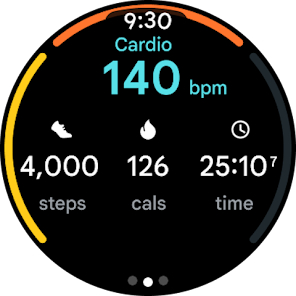
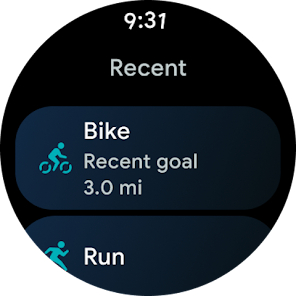
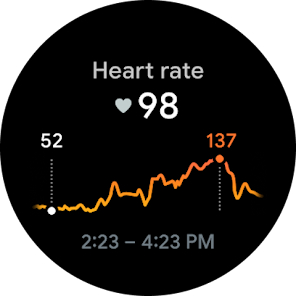
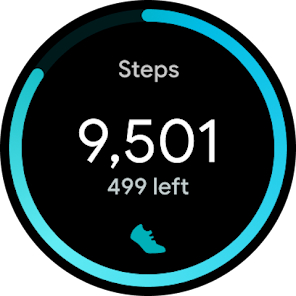
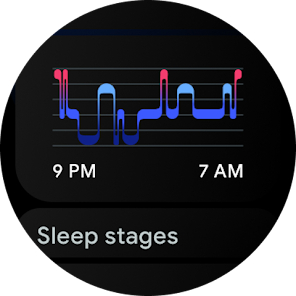
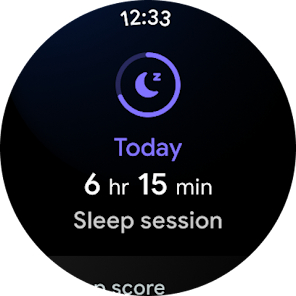
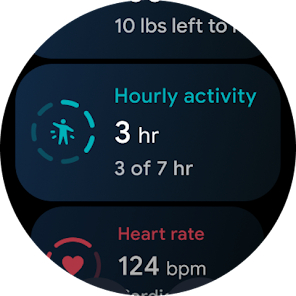
AC's Chris Wedel is on-site in NYC for the Google event, which is going to start in about 45 mins!!
Pass obtained pic.twitter.com/ra21P2zdviOctober 6, 2022
Other rumored specs for these devices include a 6.3-inch, flat, display for the Pixel 7, with an FHD+ (2400 x 1080) resolution and a 90Hz refresh rate. This is down from the 6.4-inch display found on the Pixel 6 while retaining the same resolution and refresh rate. Meanwhile, it’s more of the same for the Pixel 7 Pro, as it is said to use a curved 6.7-inch LTPO QHD+ resolution, complete with a 120Hz refresh rate. Despite the display specs looking the same on paper, rumors suggest that Google will be using a different panel from Samsung this time around.
With the new panel, Mishaal Rahman points out that “it’ll be brighter than the Pixel 6 Pro,” and could top out at 1,000 nits of brightness. It won’t match up with the likes of the iPhone 14 Pro Max or Galaxy S22 Ultra, but the Pixel 7 Pro will likely be a marked improvement over its predecessor.
Google really tried to swing for the fences with the Pixel 6 and 6 Pro, as the company ditched the rear-mounted fingerprint scanner in favor of an in-display scanner. However, that scanner has been at the center of a lot of issues for users, as it’s nowhere near as reliable as the traditional sensors Pixel fans have become accustomed to over the years. The Pixel 7 and 7 Pro will both have in-display fingerprint scanners again, but we’ll have to wait to find out whether these have been upgraded.
It seems that the Pixel 7 and 7 Pro might have a bit of a surprise for users in terms of biometrics. The Pixel 6 Pro was rumored to feature support for face unlock, but it still has yet to officially be introduced. In fact, it’s entirely likely that this was ditched at the last minute, but will make its debut with Google’s 2022 flagship lineup. The last Pixel phone to feature facial recognition was the Pixel 4, but now, it seems Google is giving its users a bit of choice when it comes to unlocking their phone. We’ll have to wait to see how this is being implemented, but we’re not holding our breath that it’s the Pixel 4s biometrics making a return.
There were concerns that Google would end up increasing the prices for its latest devices, especially considering the popularity of the Pixel 6 and its $599 starting price tag. Thankfully, it doesn’t seem as if that will be the case, as rumors point to Google keeping everything the same for the Pixel 7 and Pixel 7 Pro. This means that you can get Google’s latest phone for under $600, and if you want a bigger screen with an extra camera, the Pixel 7 Pro is likely to come in at $799. And for the first time since the Pixel 3 and Pixel 3 XL, both of Google’s 2022 flagships are expected to land in India, adding even more competition to an ever-expanding market.
While we’re expecting Google to take its sweet time showing off the Pixel 7, Pixel 7 Pro, and Pixel Watch, that’s not all that we’re hoping to see. The company announced the existence of a new Pixel Tablet during I/O 2022, giving us a look at what’s to come while saying it would arrive “sometime” in 2023. Given the recent news about Google’s decision to trash an updated Pixelbook 2, we’re keeping our fingers crossed that we’ll learn more about the Pixel Tablet during the event.
From Chris, who is inside in the event:
"The place is filling up fast, which isn't difficult because the room is SMALL. But there are definitely some big hitters in attendance from favorite YouTube creators to fantastic journalists."
And we know Michael Fisher is there too! Check out his tweet of what it looks like on the inside.
Tiny room for a big reveal #MadeByGoogle pic.twitter.com/m7viQKDCD5October 6, 2022
Okkkkkkk LESSGOOOOO, it's GOOGLEY PIXELY TIME !!
Hiya Rick Osterloh, we're excited for everything today. He's talking about the new Google store that opened up in NYC, and we're going to see a bunch of cool things. But if I have to hear the word "ambient experience" ONE MORE TIME FROM ANOTHER COMPANY. please.
Google shows off its Pixel design language, which it says is uniquely Pixel and quite stunning. We totally agree, even if that tablet looked pretty dated when it was showed off at I/O.
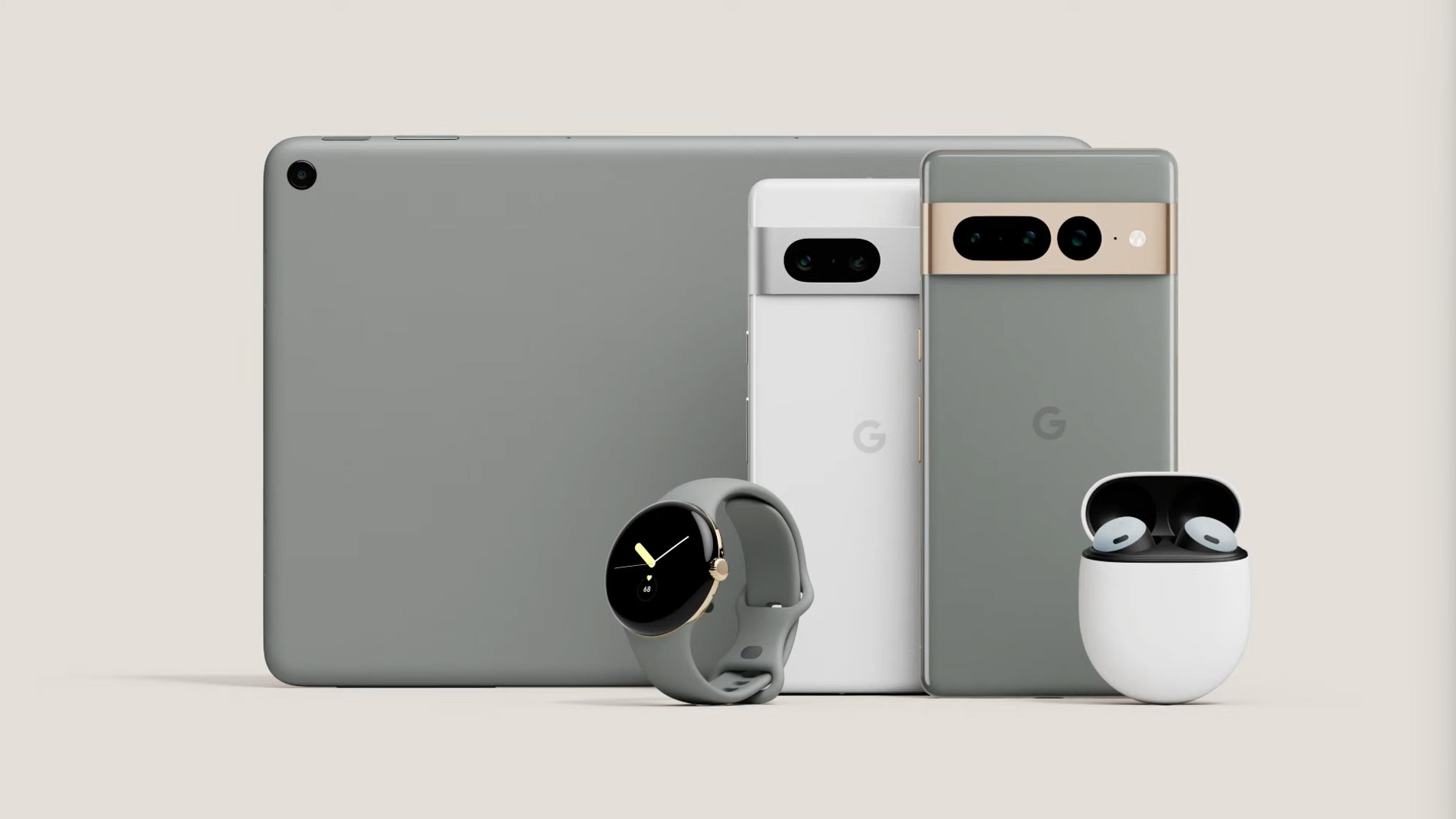
Google says the Pixel 6a is the fastest-selling Pixel ever. That doesn't seem too surprising given the price of the phone and how impressive its camera is, and it shows that Google's Pixel line is getting more popular over time.
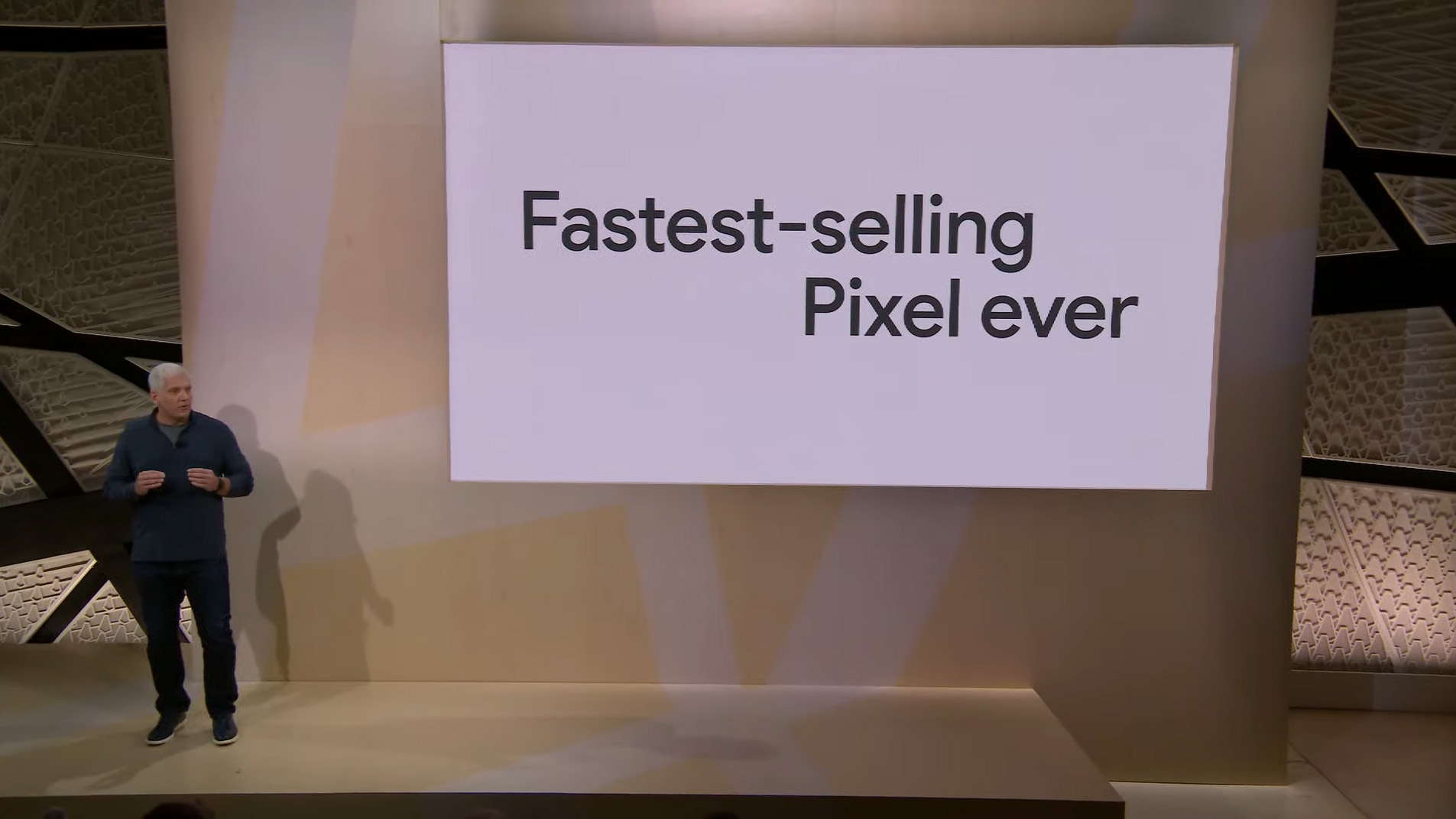
Google talked about how Pixel was first to the game with always-on display on the Pixel 2, how it launched Night Sight on the Pixel 3 to revolutionize low light photos, and how car crash detection has been available on Pixel since 2019. Always love the shade, Google.
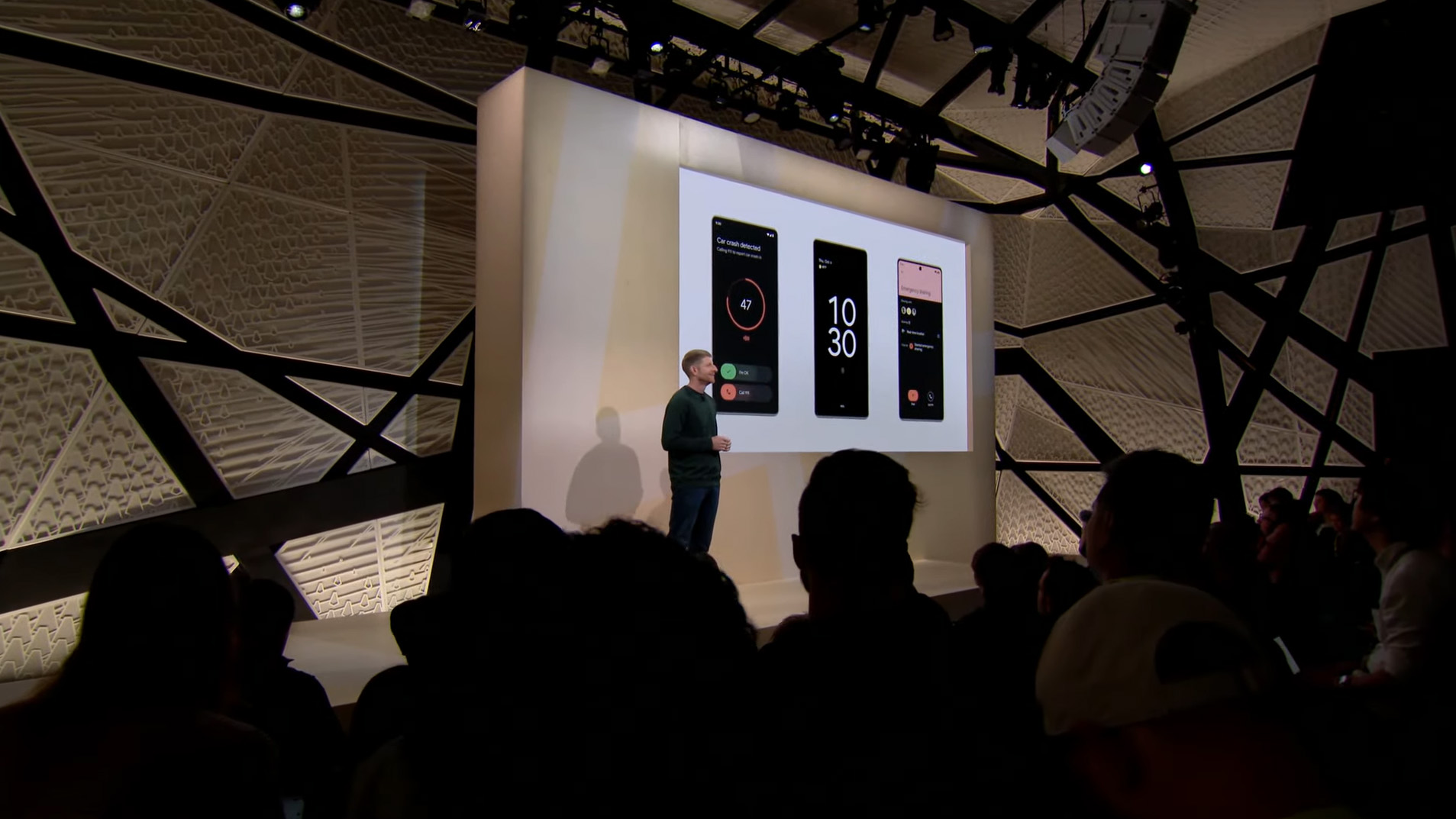
The smart selfie feature is so freaking amazing. Honestly this entire presentation has been so warm and cozy. Having an inclusive camera for people who can't see is really an incredible feature.
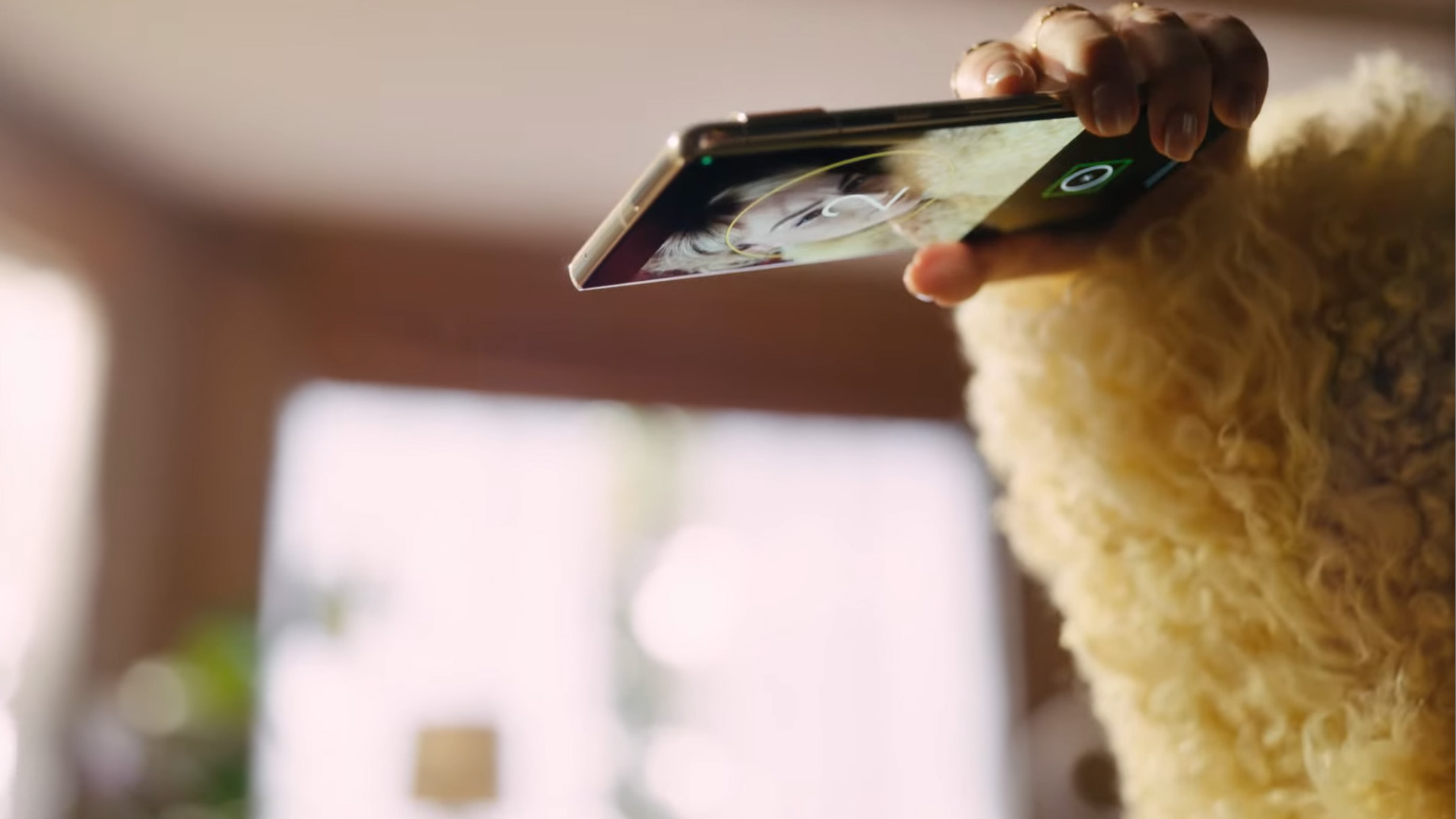
Google just announced next generation Super Res Zoom on Pixel 7 and Pixel 7 Pro. In a nutshell, all zoom levels are now enhanced with Tensor G2's machine learning algorithms making them sharper and more detailed than ever (without looking oversharp).
Both phones support the new 2x zoom which Google says looks identical to 2x optical zoom from a dedicated lens.
Pixel 7 Pro offers a 5x optical zoom lens and is able to perform the same machine learning upscaling on photos zoomed in at 10x, making them look identical to photos taken with a dedicated 10x lens.
Lastly, Google says it's offering up to 30x clear zoom on the Pixel 7 Pro, making it the farthest zoom we've yet seen on a Pixel phone.
These new zoom capabilities also work on video taken from the phones, and Google's new object tracking will keep moving objects in the frame even when you zoom up to 20x into the shot. You'll see from the images below that there's a new preview thumbnail that shows what's in focus.
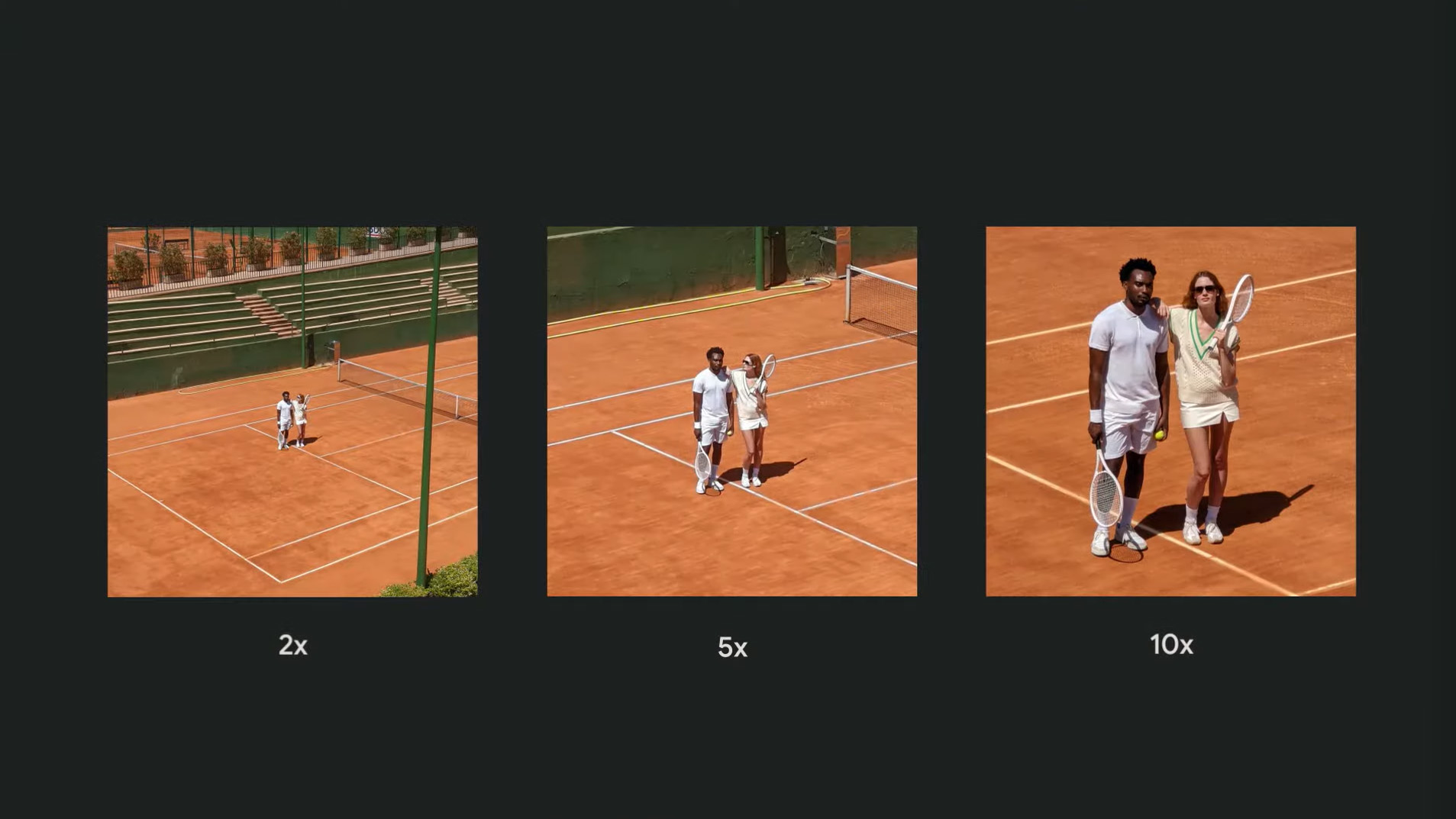

The Pixel Watch is so gorgeous I can't even handle it tbh.

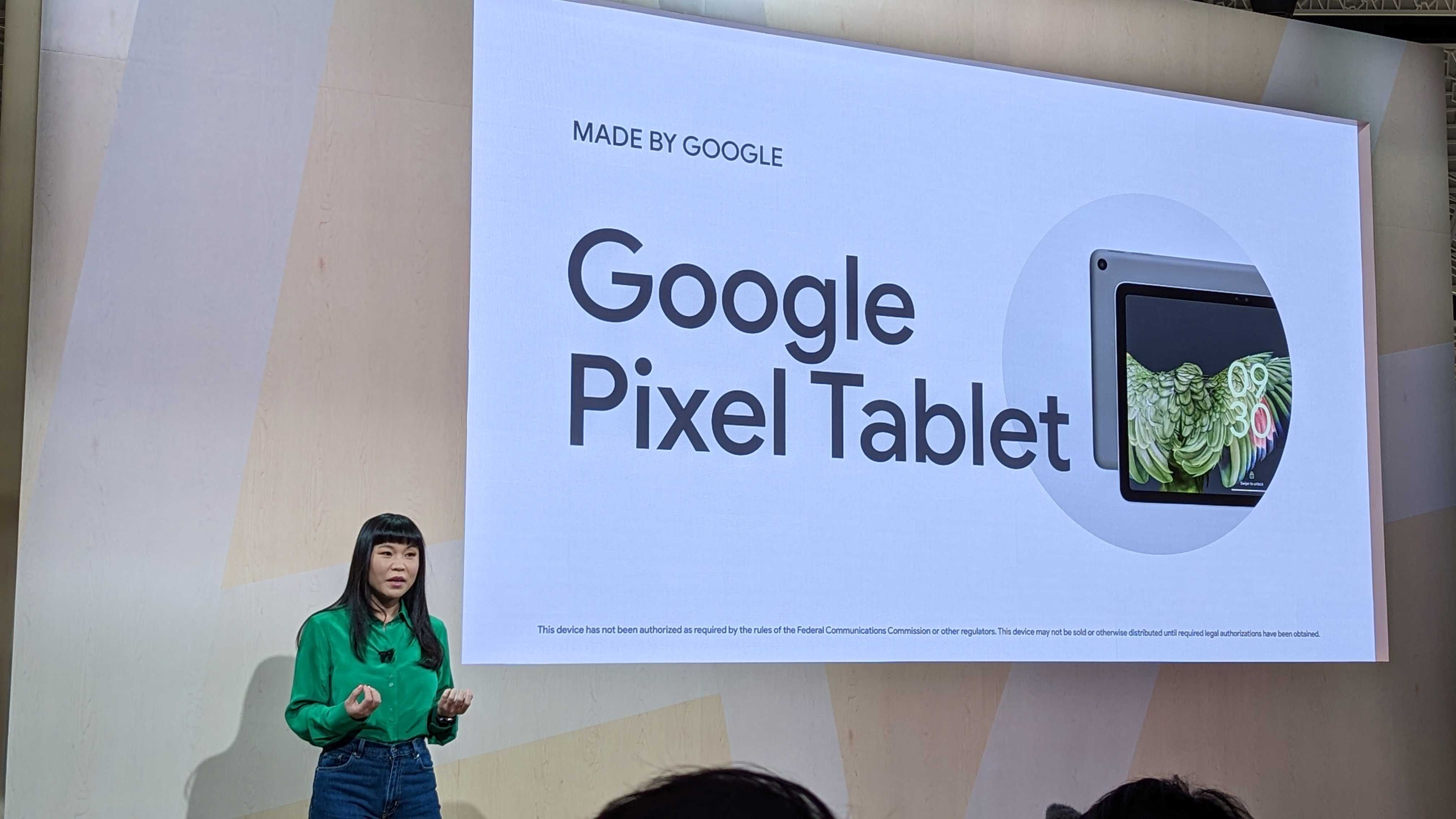
Google's on stage going on about how the Pixel Tablet slots right into the rest of the Pixel ecosystem. This is going to be pretty interesting with its stylus support, and the same Tensor G2 chip as the Pixel 7 and Pixel 7 Pro.
The rumors were right...Pixel Tablet can be paired with the Charging Speaker Dock, transforming your tablet into a portable Nest Hub Max. Looking at this from the front, it looks almost indistinguishable, including the massive bezels around the screen.
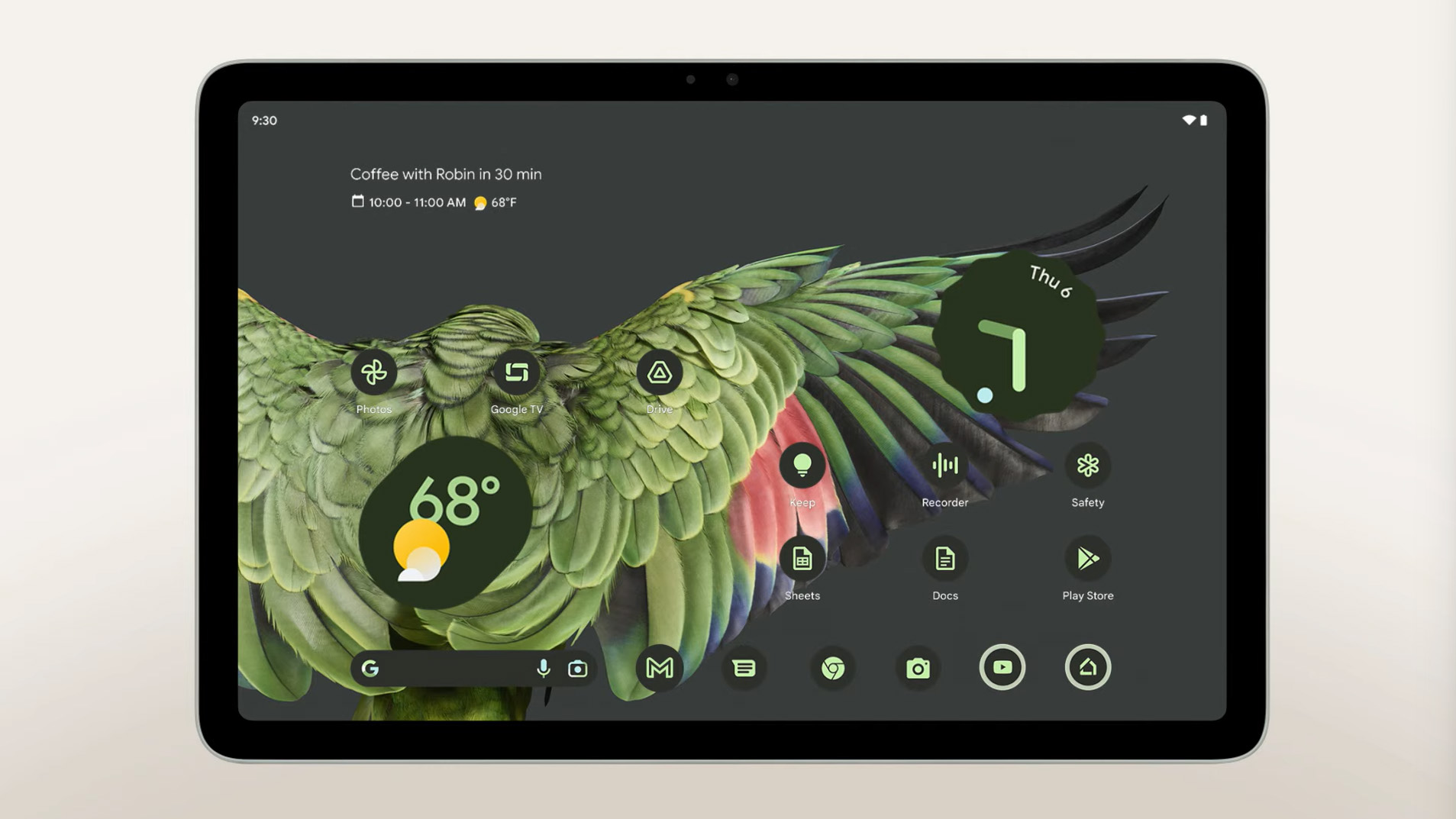
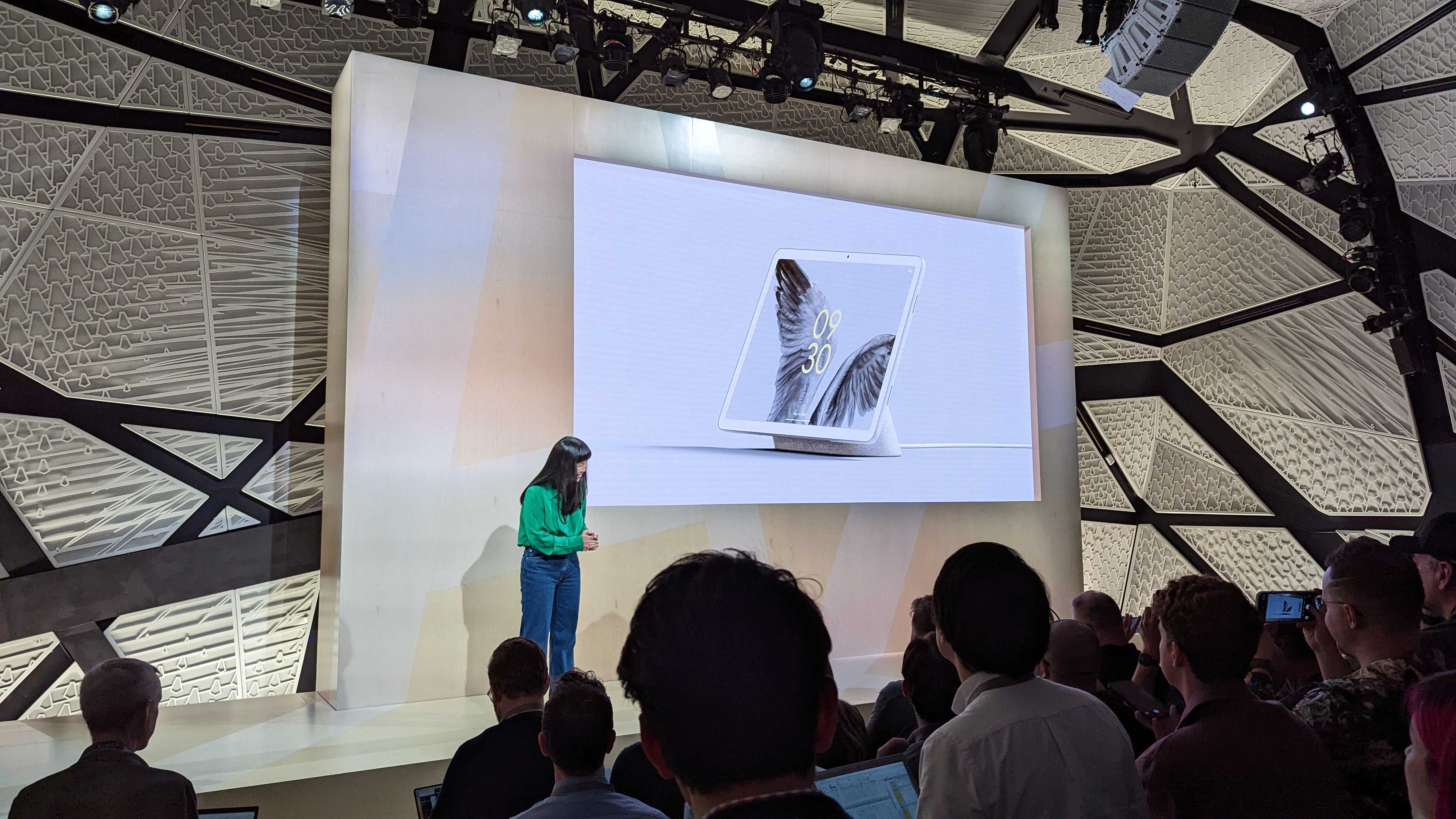
Google's spending all this time teasing everyone about the Pixel Tablet, but it won't be available any time soon. According to Google, it will still be arriving sometime in 2023, and we're hoping that it will be early in the year.
Here's a better look at the Pixel Tablet on its dock. Looks like we guessed right back in May when we surmised that Google was turning this thing into a detachable Nest Hub. The speaker on the dock alone makes it look like it's worth buying if you're planning to pick up a Pixel Tablet when it comes out next year. I bet the audio from that thing is killer.
As you would expect from a Nest Hub, docking the tablet will change up the UI to look more like Google's smart displays, including the famous Google Photos always-on display that we all know and love from those products.

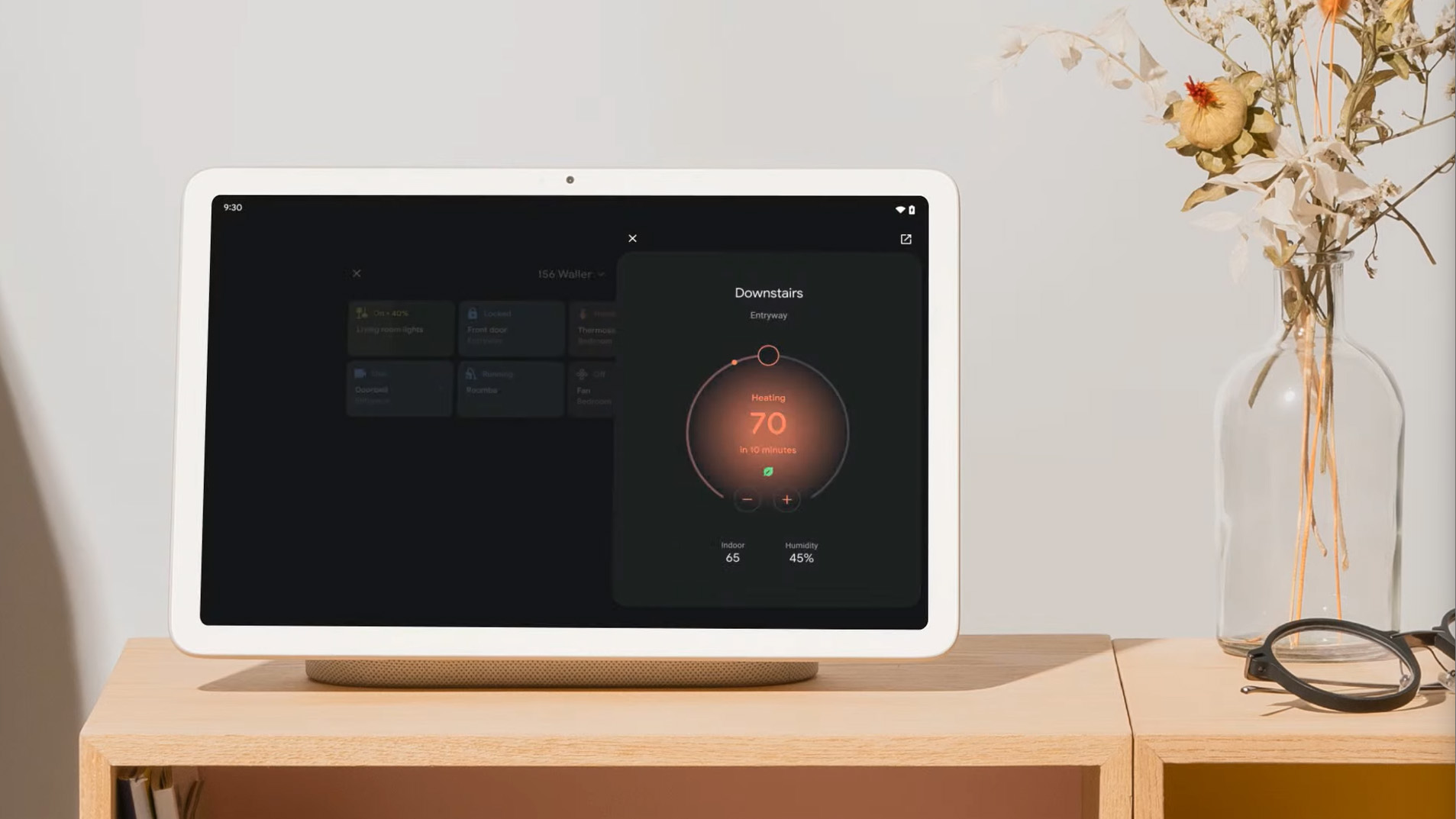
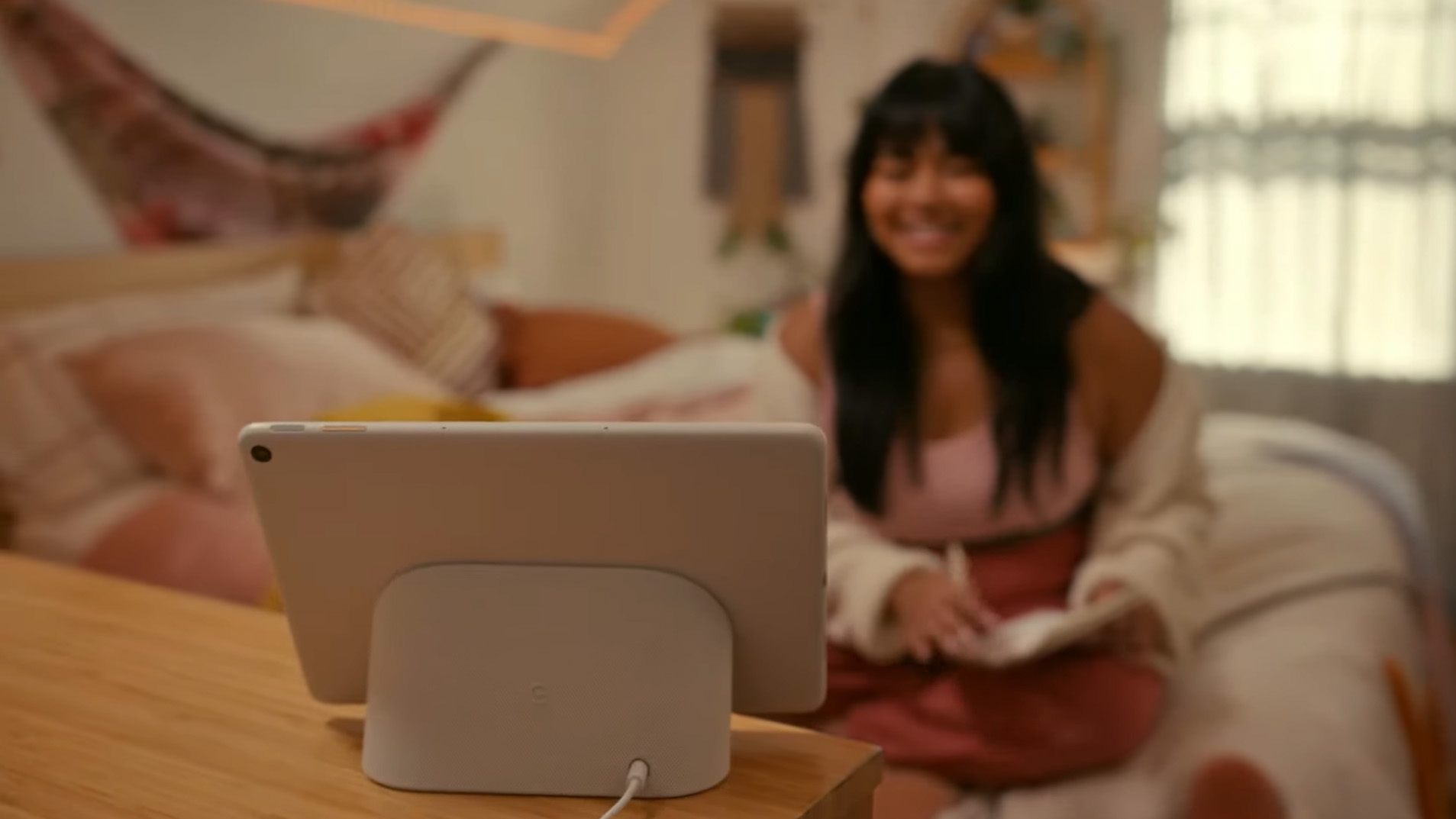
Pixel Watch will be integrating Fitbit in seriously deep ways, including the full Fitbit app we talked about before today's event went live. That includes proper sleep tracking with full stats on the watch, constant heart rate monitoring throughout the day, and even a wellness report along with a health metrics dashboard for aggregating all that data into one cohesive, easy-to-understand place.

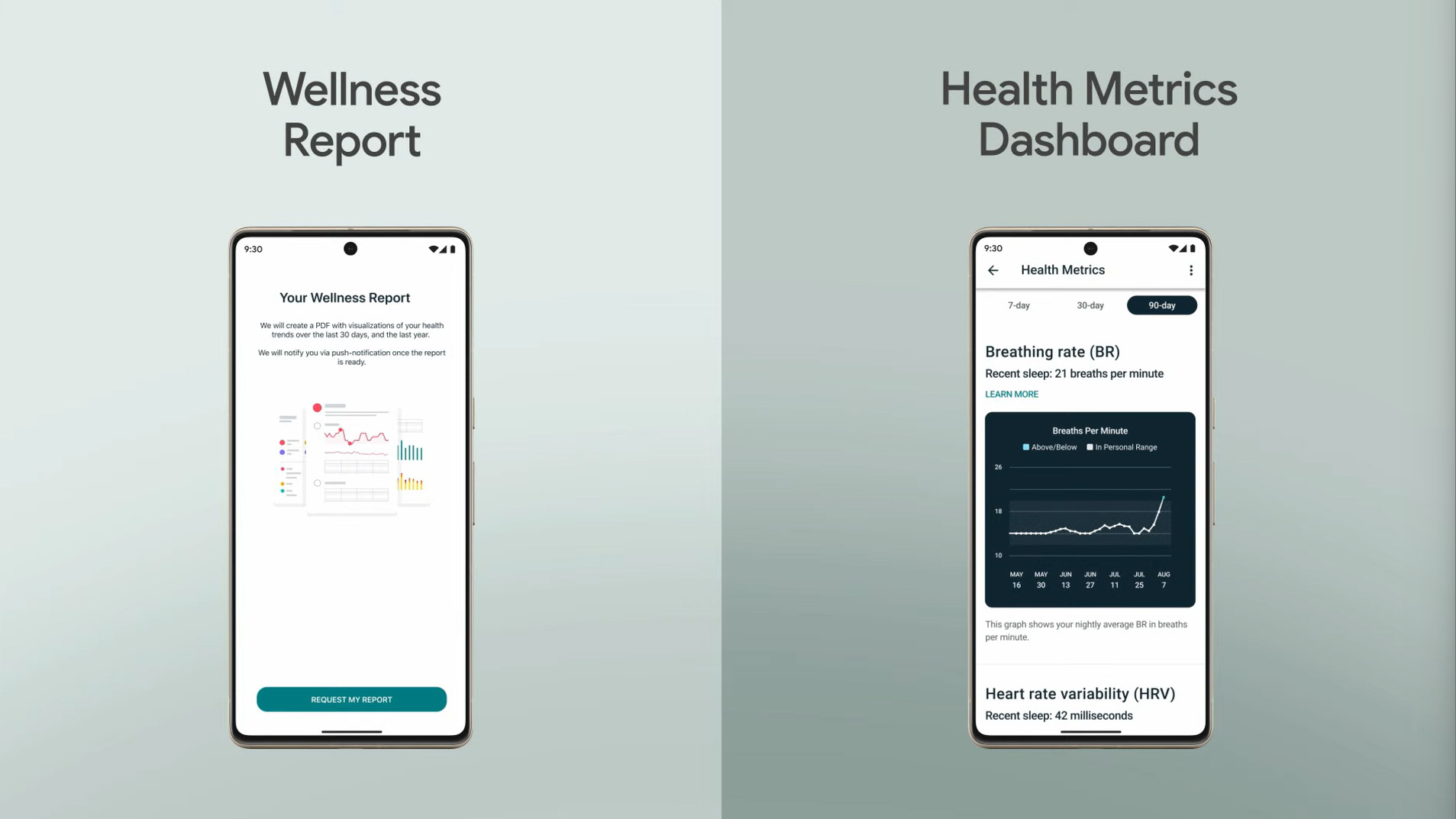
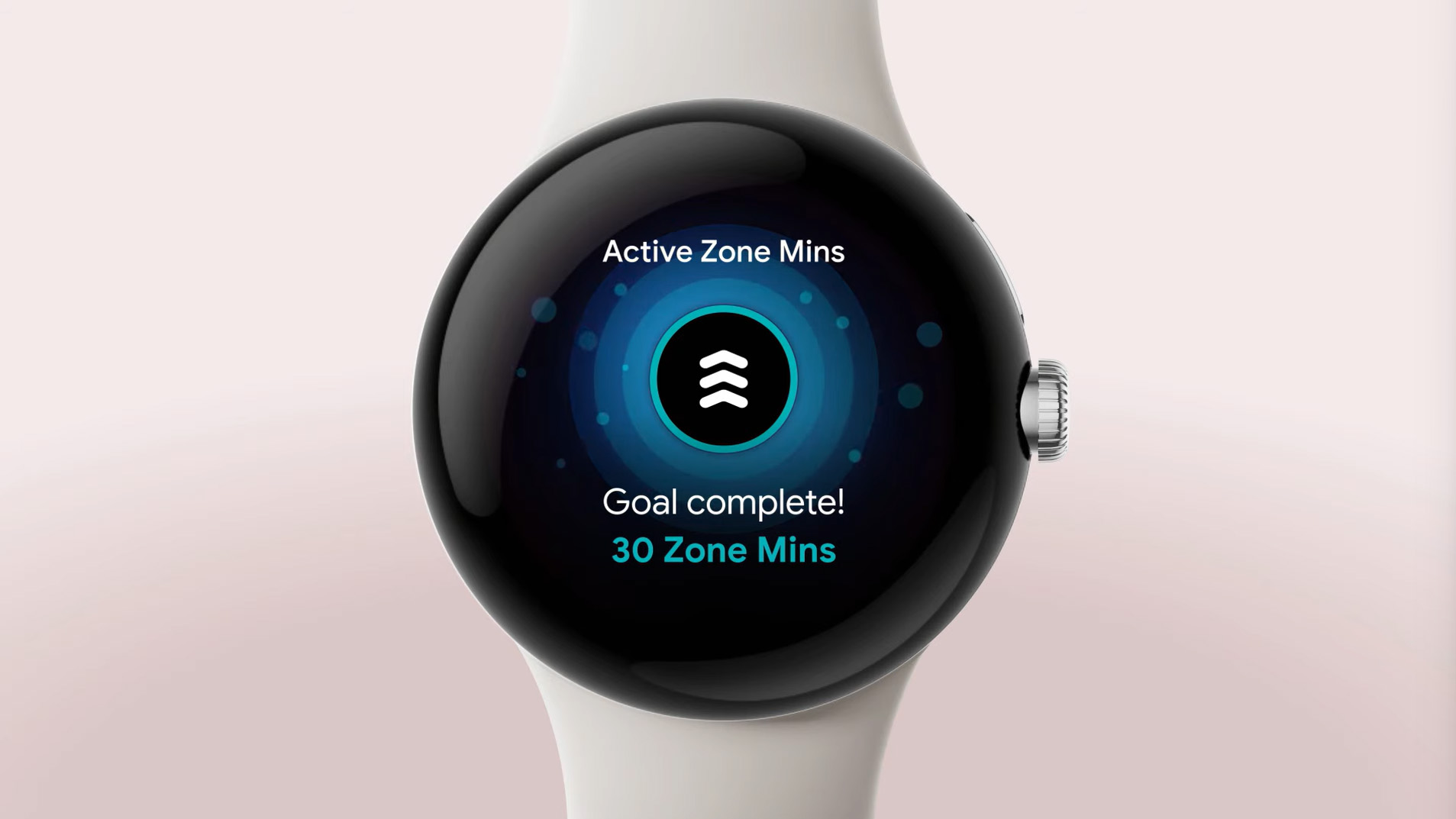
One of the coolest things Google showed off today wasn't a product feature or spec. It was what the Pixel Watch and Pixel 7 phones are made of!
Specifically, the Pixel Watch is made of 80% recycled steel, and all fabric watch bands for the watch are made of 100% recycled yarn.
On the phone side of things, the Pixel 7 and Pixel 7 Pro feature 100% recycled aluminum frames. That's not just the outer edge that you can see when holding the phone, either. It also includes core components of the phone's structure, as you can see in the image below.
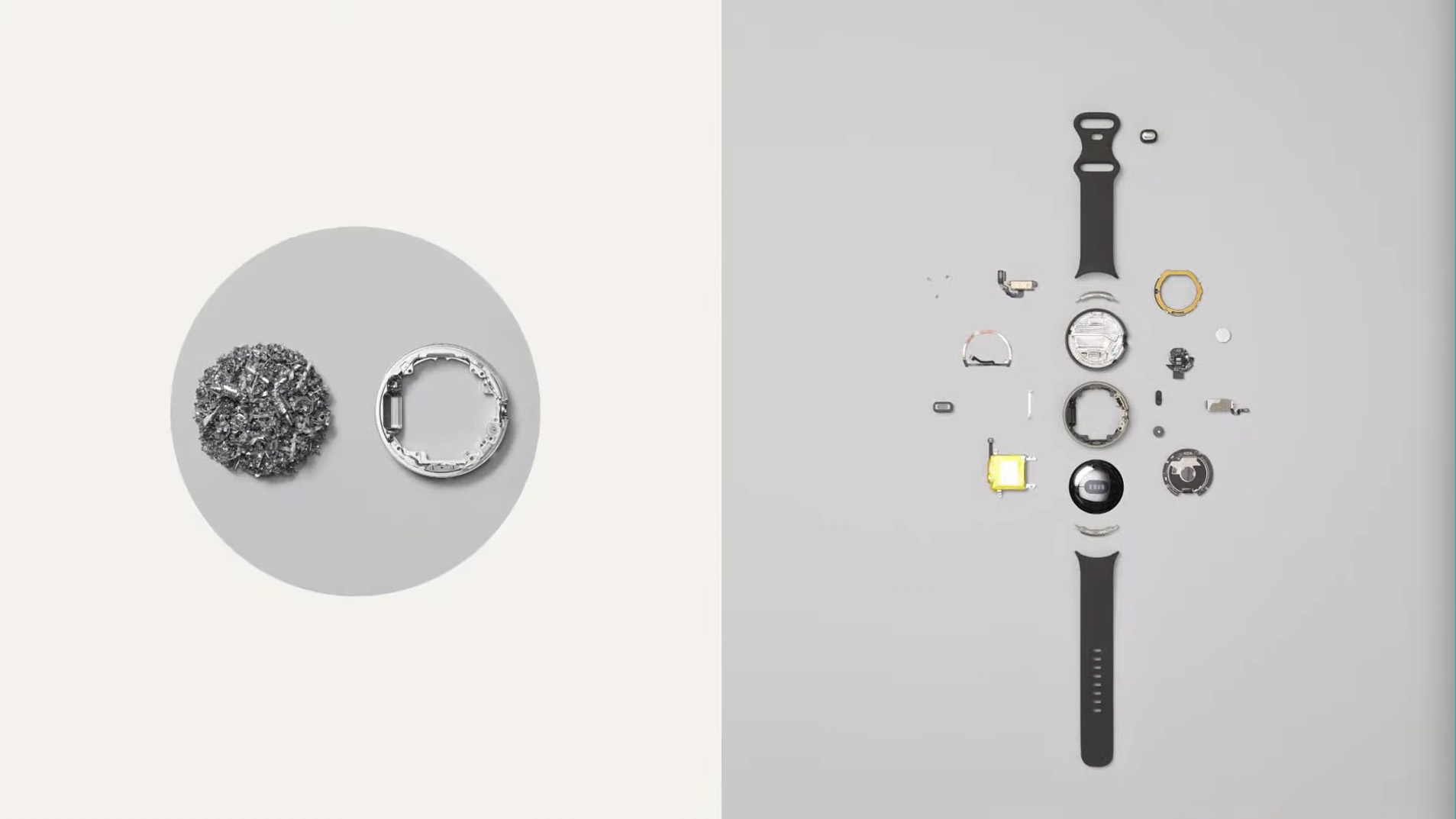
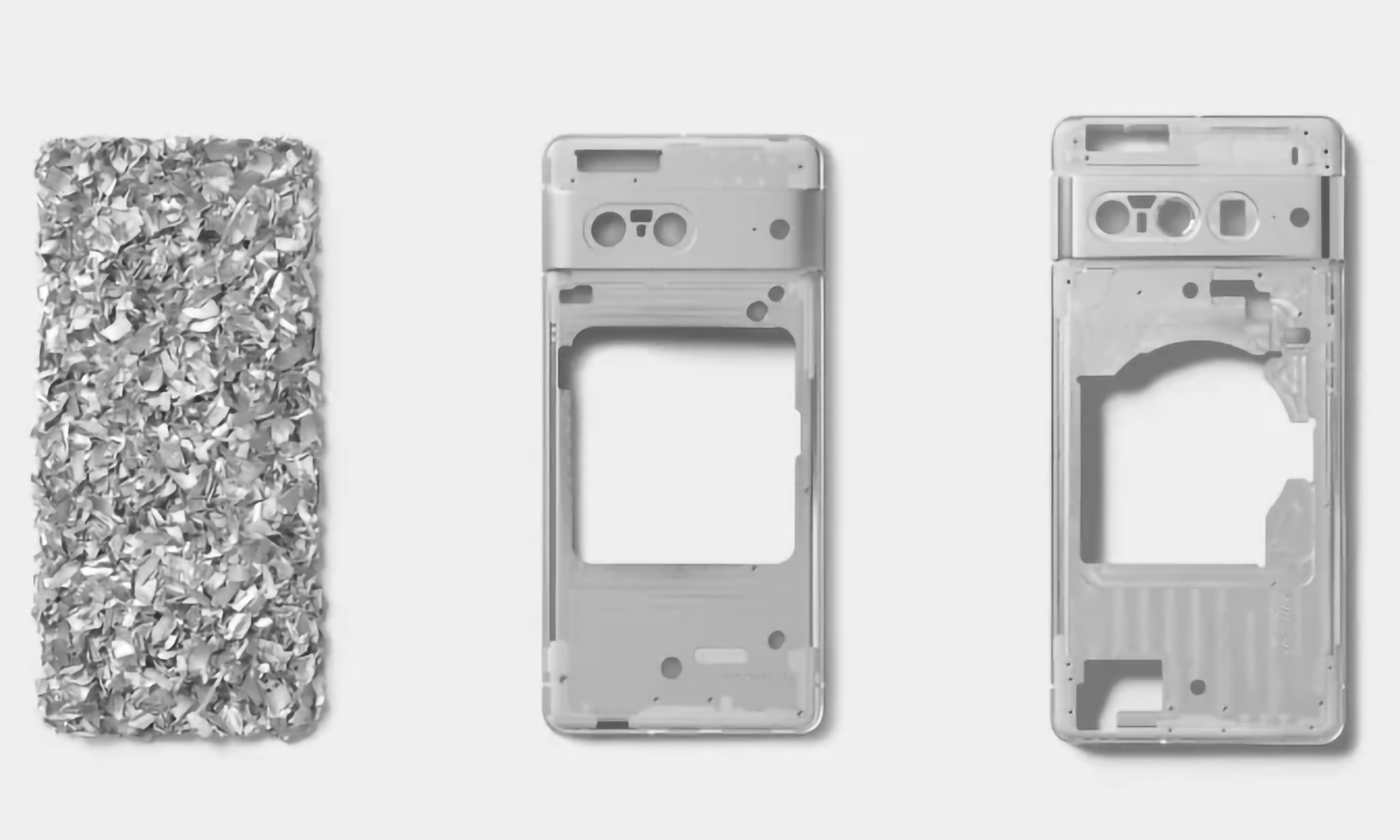
Our man Chris Wedel is on the ground in Brooklyn, New York covering the Pixel event for Android Central and is getting his hands on just about everything Google announced today. First up is the Google Pixel Watch! It looks right at home next to a Pixel 7, I'd say.
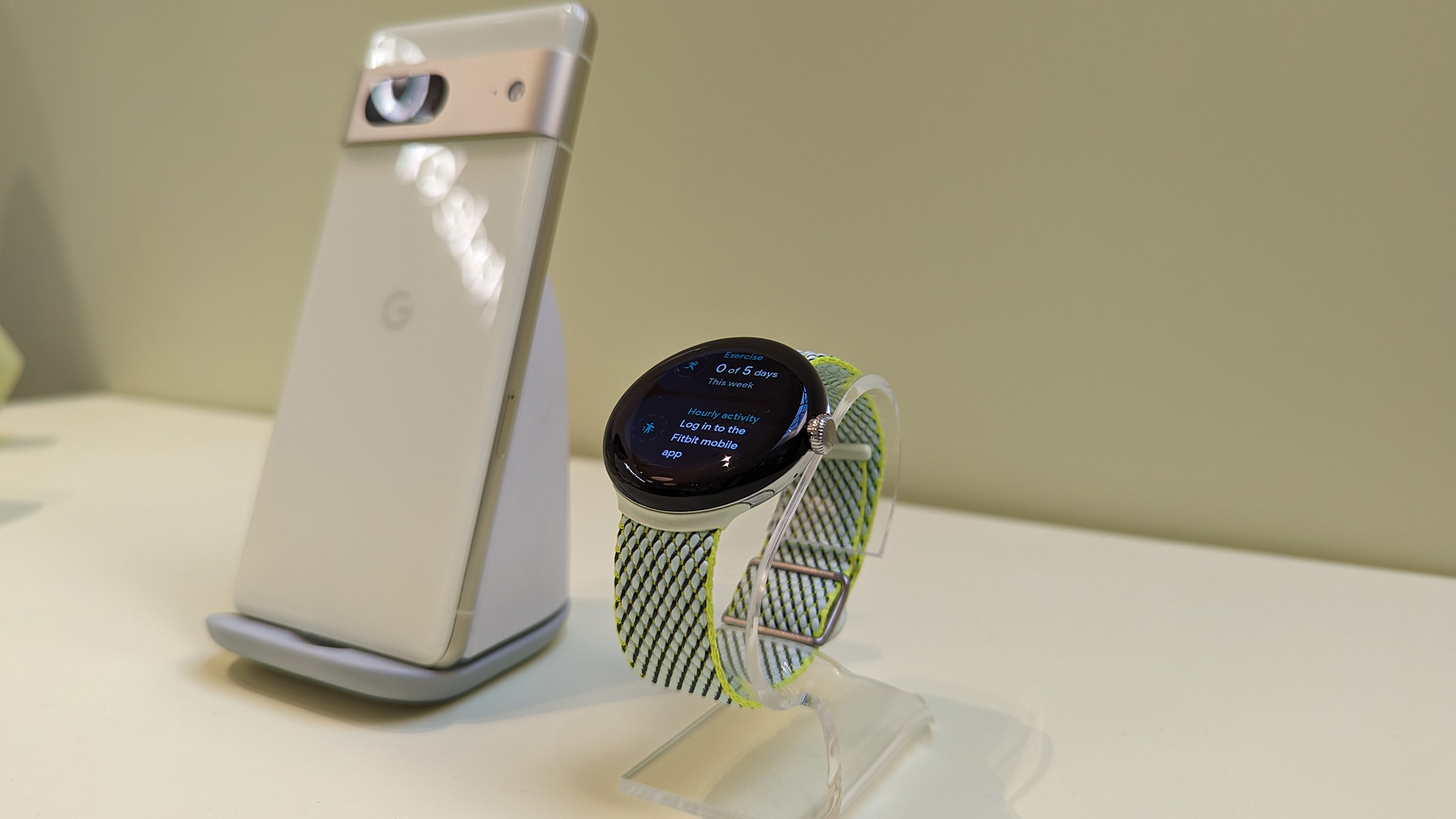
Google is selling it in a range of colors and band styles, and the way the band attaches to the body of the watch is nothing short of brilliant. It's both easy to do and super quick, two things that aren't usually associated with watch bands.

And here it is next to a Samsung Galaxy Watch 5 Pro to help illustrate how svelte Google's design is next to Samsung's more industrial style. Samsung's watches have always looked great, but Google is definitely going for a much more glamorous look with this watch!
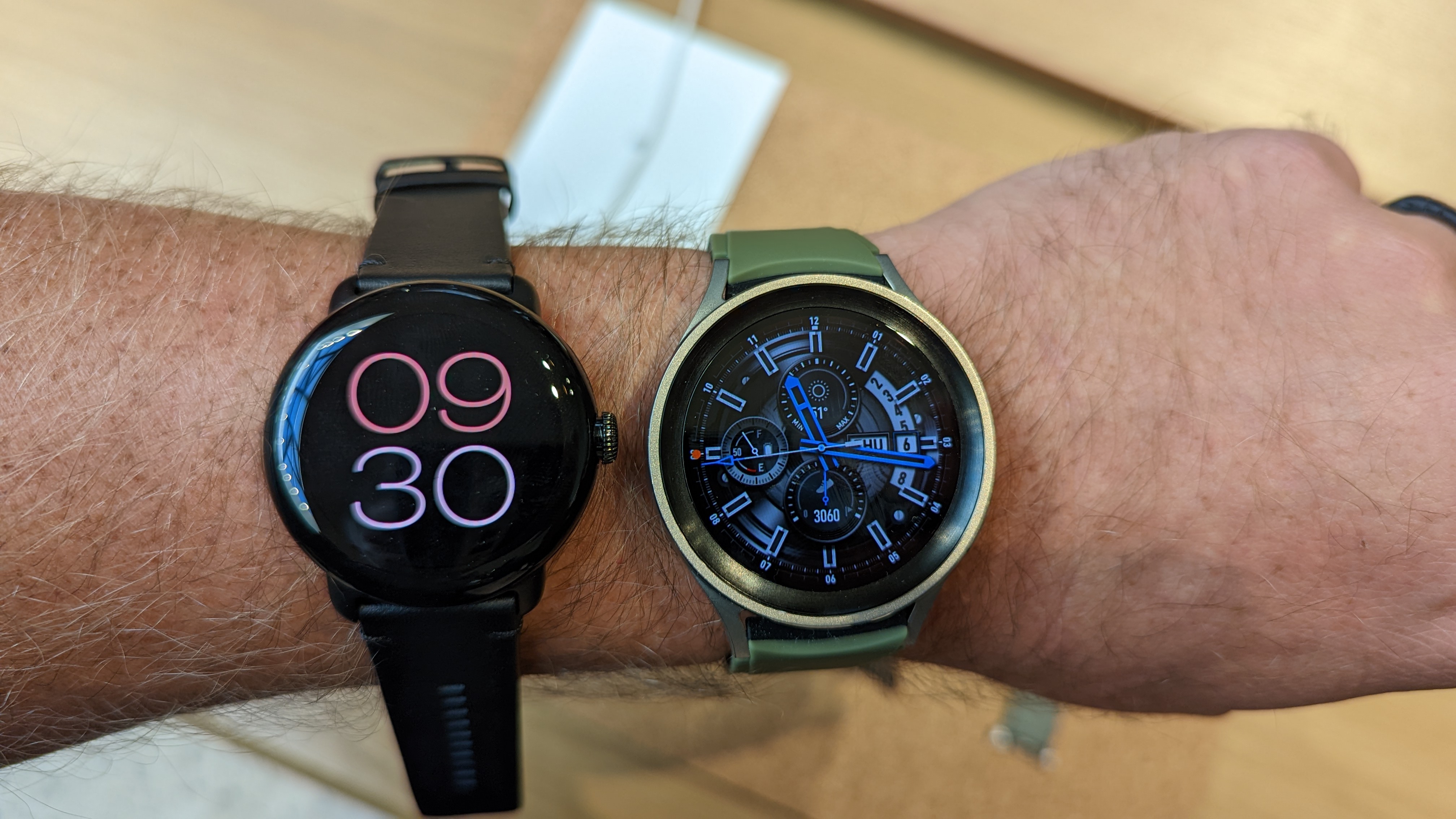
Google is really showing off the cohesive style of its new lineup, which all look like they've been purposefully designed together (instead of as separate products). It shows a Google working together like we seldom see. Heck, Google's announcement of the Nest WiFi Pro just the other day seems like the entire team didn't get the message about Google getting rid of Stadia, for example.
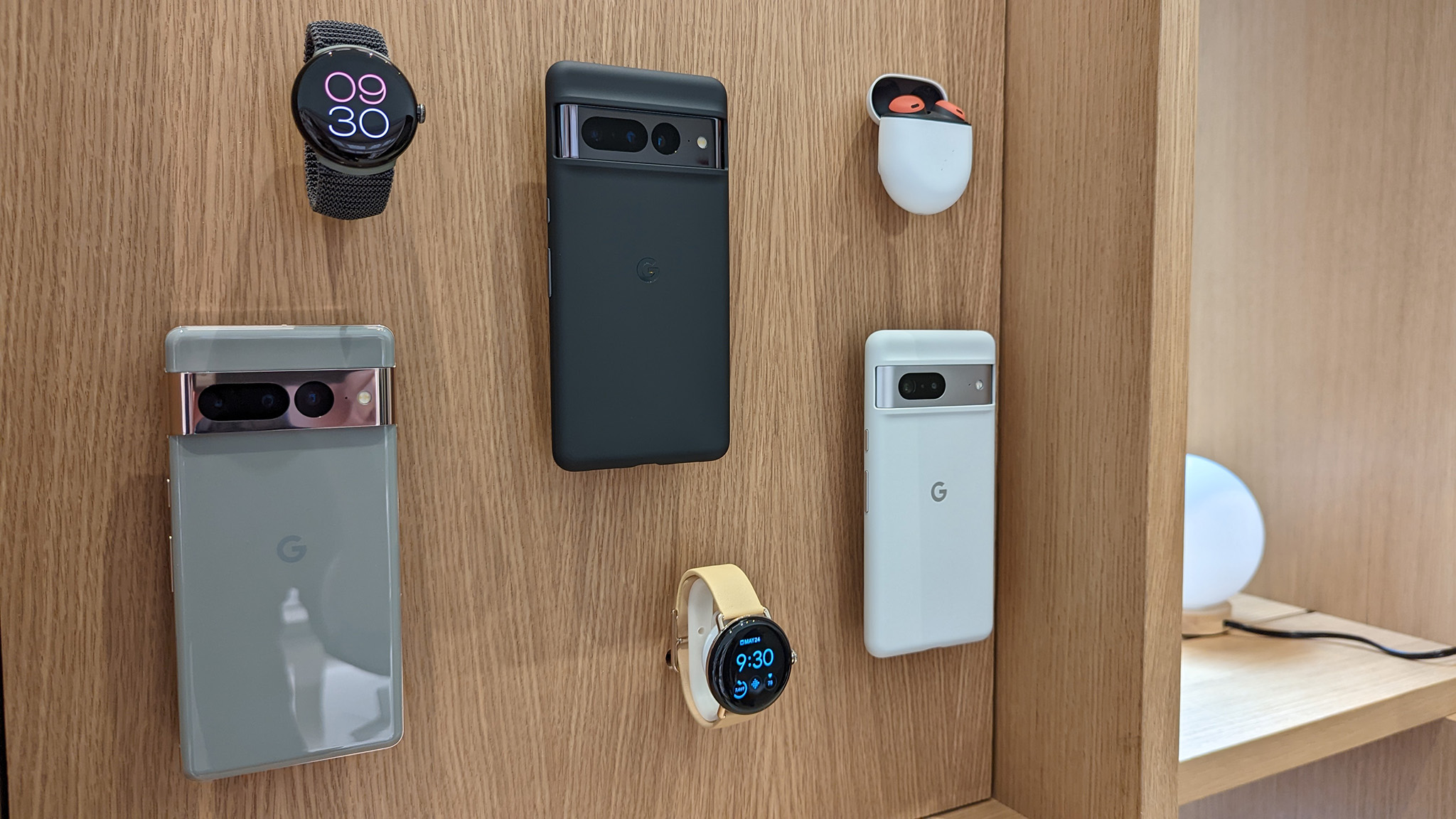
Google's got lots of these dioramas hanging around the event space and at the Google Store right next door in Brooklyn proving the point. Like a color? You can get it in the phone, watch, and earbuds, and Google's Material You design language also looks and feels cohesive between products. Boy, is it ever a nice change of pace from the usual Google.
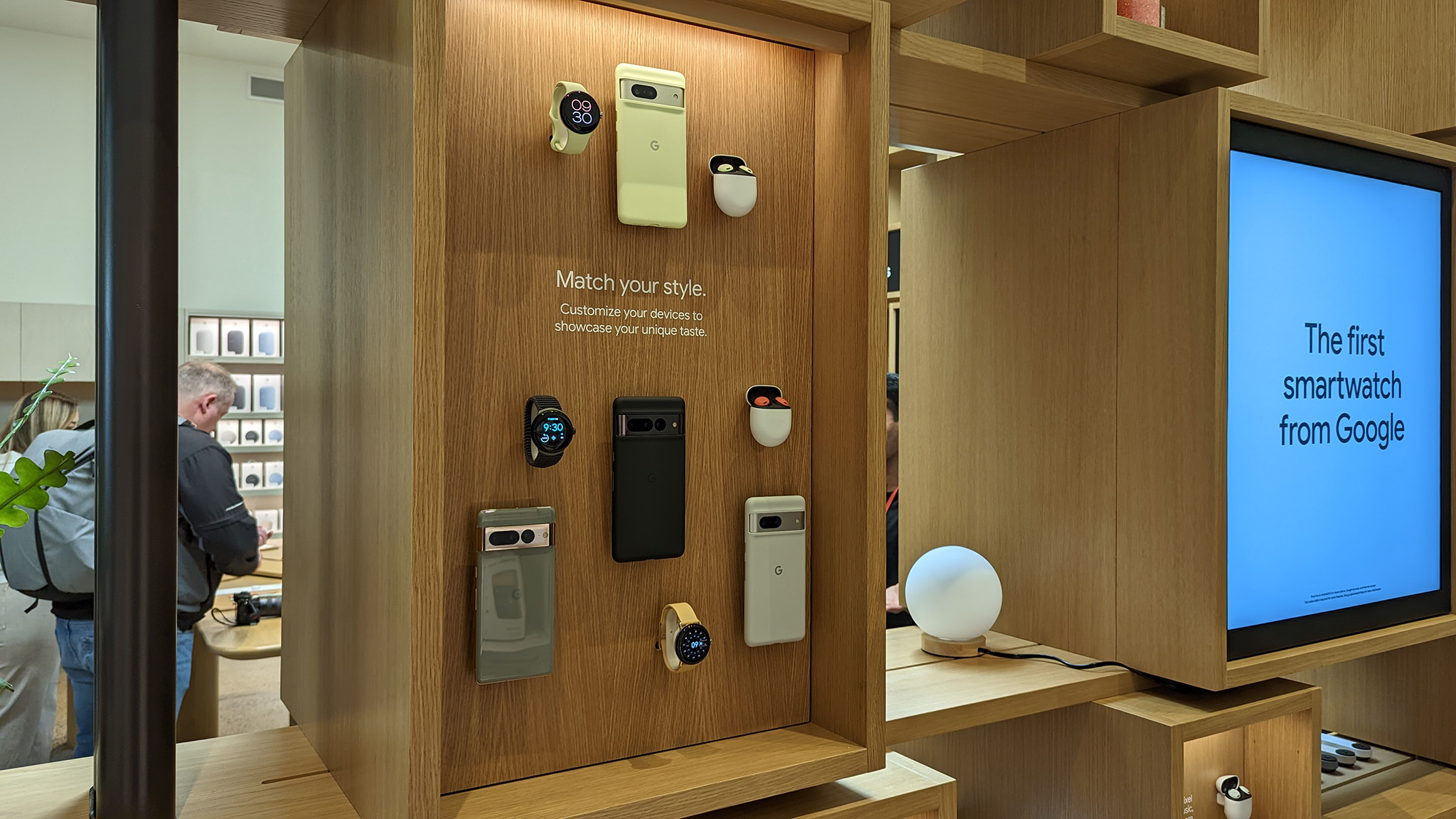
In case you missed it, our Pixel Watch first impressions are now available for all to peruse. Chris got to spend some quality time with the watch — including several different kinds of bands — and brings his smartwatch expertise to the event on our behalf.
It seems to finally be the melding of Fitbit and Wear OS that we've been waiting for since Google acquired Fitbit more than 18 months ago. There are a ton of unique features and major selling points for anyone looking for a new smartwatch this year, and it seems that Google specifically might have shied away from forcing folks to buy a Pixel phone just to get the best experience with the Pixel Watch.
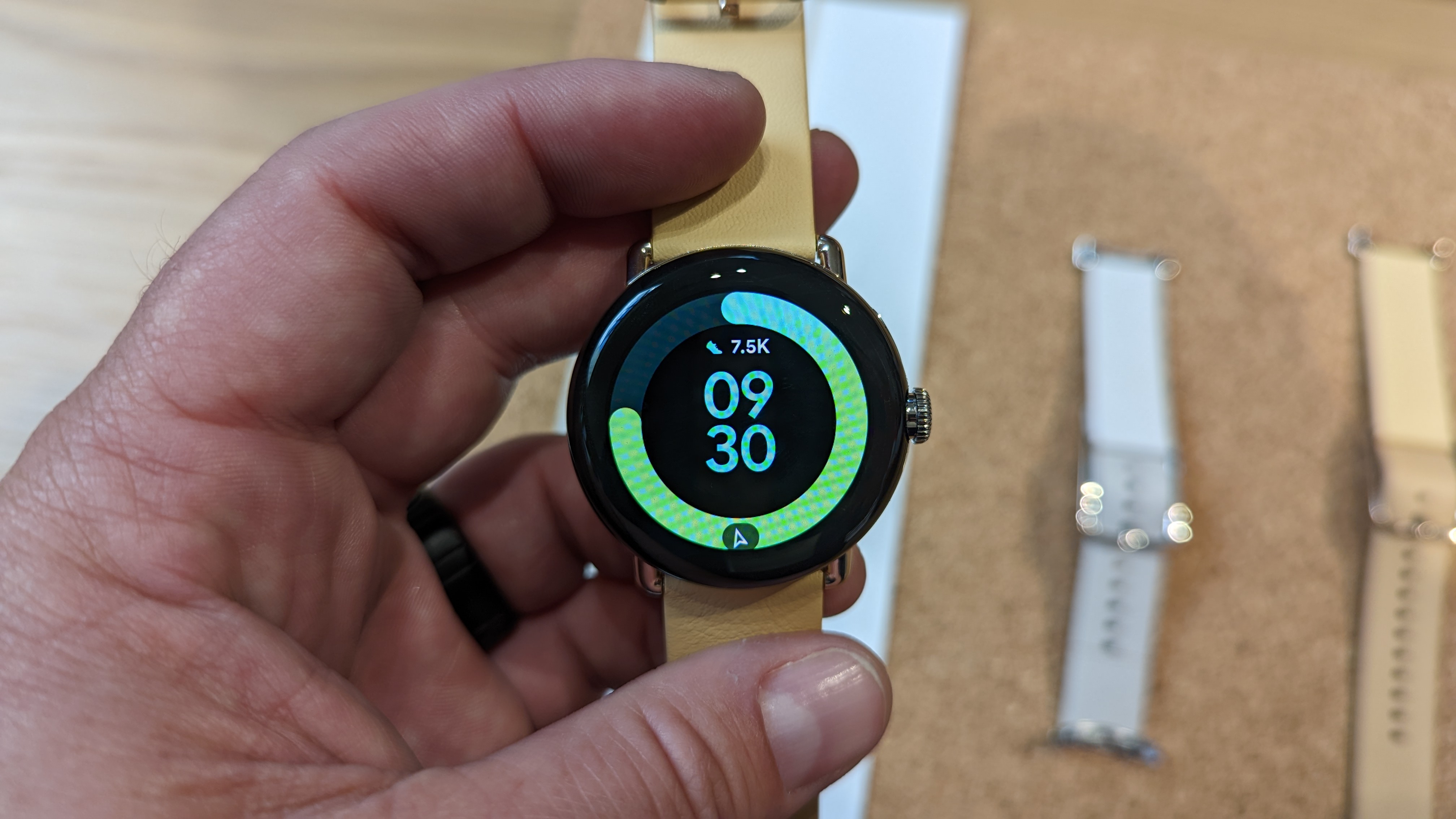
And just like that, our Pixel 7 and Pixel 7 Pro first impressions are available, as well. Both of these phones represent a clear evolution on top of last year's revolutionary design, sporting the camera bar but adding a layer of aluminum protection on top instead of being all glass like last year's Pixel 6 and Pixel 6 Pro. These are still very distinctive phones, and there's little chance you'd ever mistake them for a phone made by any other company.
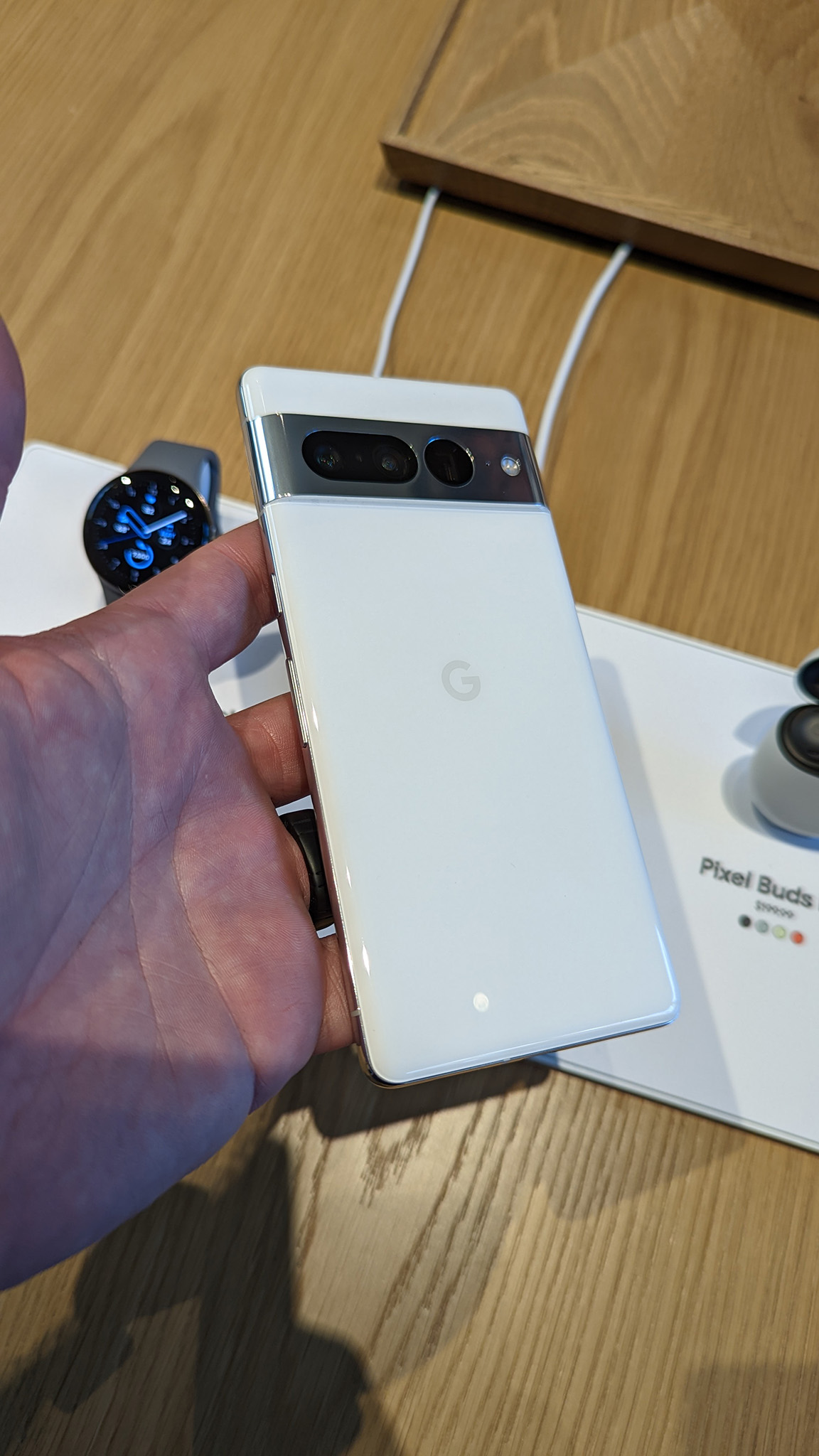
Other notable improvements include much brighter displays — up to 1500 nits bright — and the Tensor G2 processor that packs in a bevy of improvements for all things Googly.
Somehow, Google looks to have improved its award-winning cameras this year, as well. A better ultra-wide-angle lens can also be used for super macro photos, and the camera on the Pixel 7 Pro can zoom out to 30x clearly. While some other phones can do this already, Google says its next generation super res zoom tech will outdo them all. And don't forget the video improvements, as well! Better zoom, better stabilization, and less noise than last year. Check out Chris's impressions for all the nitty gritty details.
Happy with what you see? It's easy to preorder any of Google's latest tech gadgets and have them delivered just next week! We've got guides for the best Pixel Watch preorder deals if that lovely watch looks enticing enough to buy, and you can get a Pixel 7 or Pixel 7 Pro basically for free when you preorder from several different places. We listed them all in the guide, so don't forget to take a look!
Let's talk face unlock, shall we? The only time Google actually seemed to be on board with face unlock was while the Pixel 4 and Pixel 4 XL were the new hotness. Since that phone had dedicated hardware to actually scan your face and ensure that it was you — and only you — the company was able to remove the fingerprint scanner and use it as the only way to biometrically unlock your phone.
Queue the Pixel 7 and Pixel 7 Pro, the first phones from Google since then to feature face unlock. The caveat here is, unlike the Pixel 4 series, the Pixel 7 series can only use face unlock to move beyond the lock screen. Face unlock cannot be used on a Pixel 7 to make mobile payments, for example.
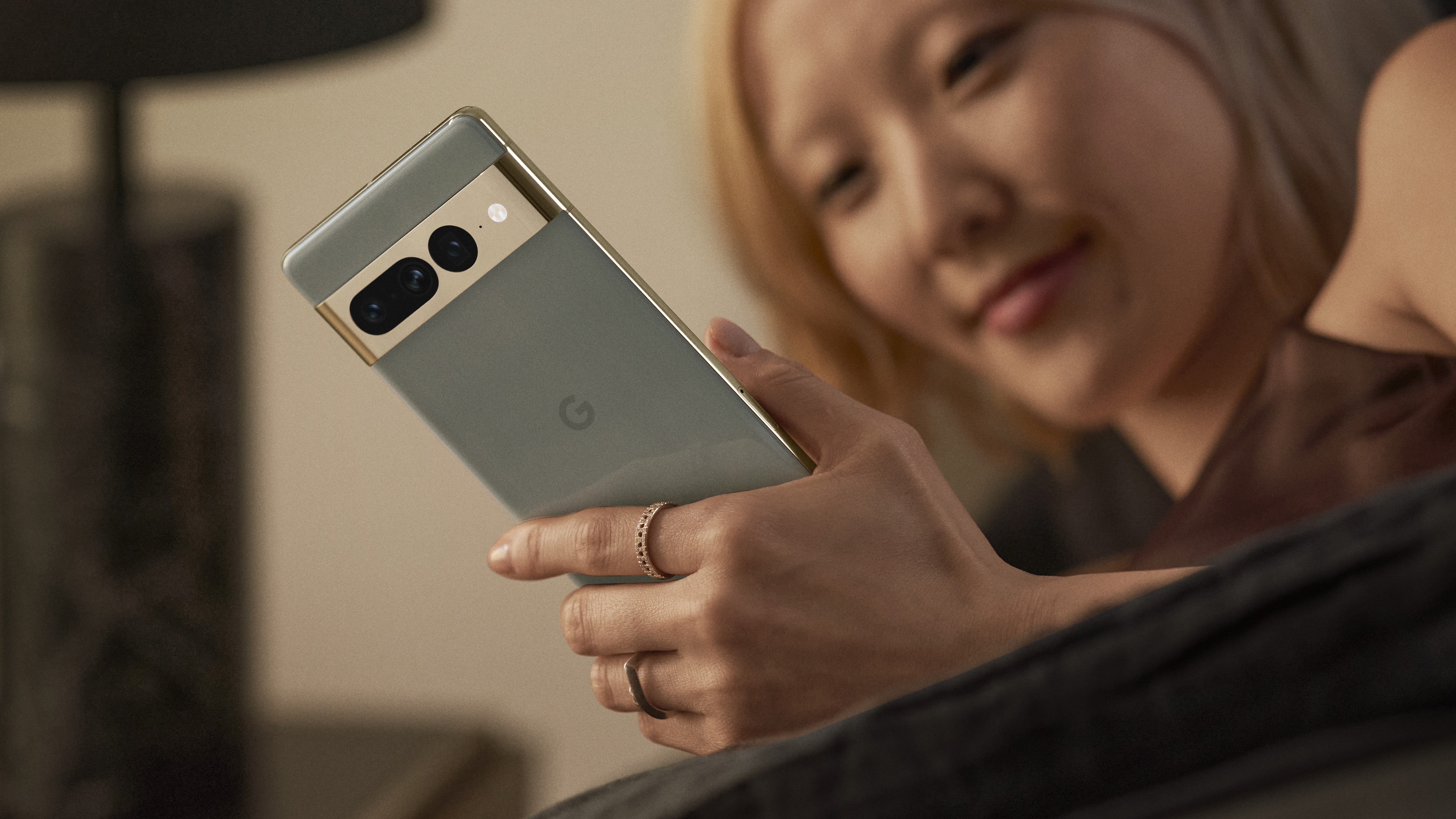
That's because face unlock on the Pixel 7 series is done only via the single front-facing camera and technically could be fooled if you knew what you were doing. Google's machine learning tricks ensure that face unlock is fast and accurate but, beyond that, it's not intended for more than just convenience.
So far, the Pixel 7's fingerprint sensor seems better for daily use than what was on the Pixel 6, but I'm sure Google decided face unlock wasn't a bad alternative for just getting past the lock screen dozens of times per day.
One thing to note. If you're picking up a Pixel 7 or Pixel 7 Pro — especially if you opt for the black colorway — you might want to pick up a clear case to help prevent smudges and fingerprints. Google might have glammed-up the Pixel 7 even more so than the Pixel 6, but it's even more of a fingerprint magnet because of it. Don't believe me? Check it out:
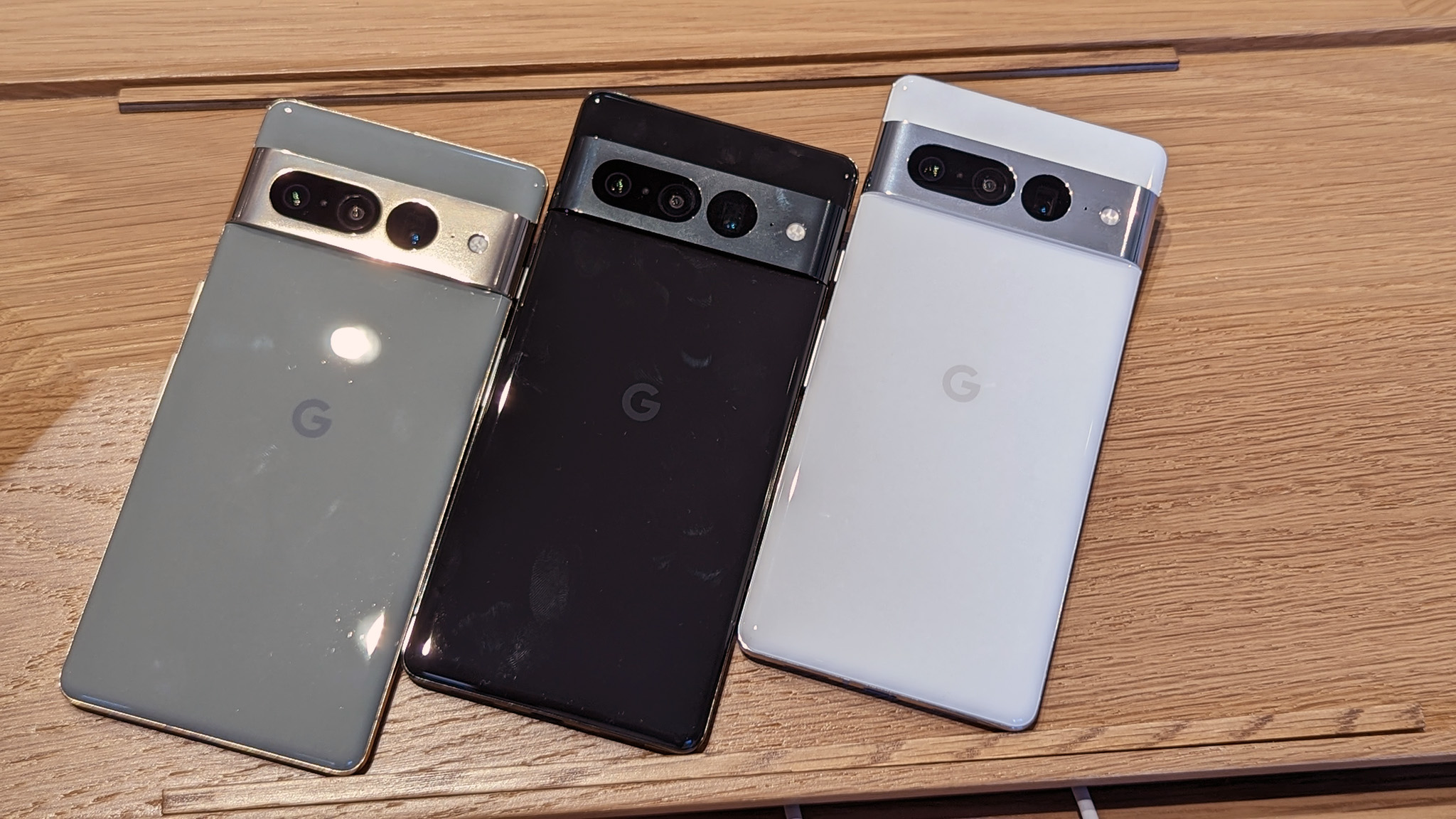
Google shied away from talking about specs (for the most part) in yesterday's presentation. It's a side of Google we haven't seen much of in the past and it seems like a big turning point for the company's marketing structure for its upcoming devices.
Instead, they spent lots of time talking about individual features that things Pixel phones can do that other phones can't — or just things Google has been doing longer than other popular phones like the iPhone. Car Crash Detection, always on display, Night Sight, and other Pixel features were talked about as having been on Pixel phones for years.
But how about the new features? Clear Calling is a new feature that's coming in a few months and will help further reduce background noise with the work of AI and Google's Tensor G2 processor inside the Pixel 7 and Pixel 7 Pro.
Similarly, a new version of Direct My Call will better display phone tree options on the phone's screen when calling businesses. If you've ever had to press the star key to repeat a menu for your doctor's office or bank, this feature will be a godsend.
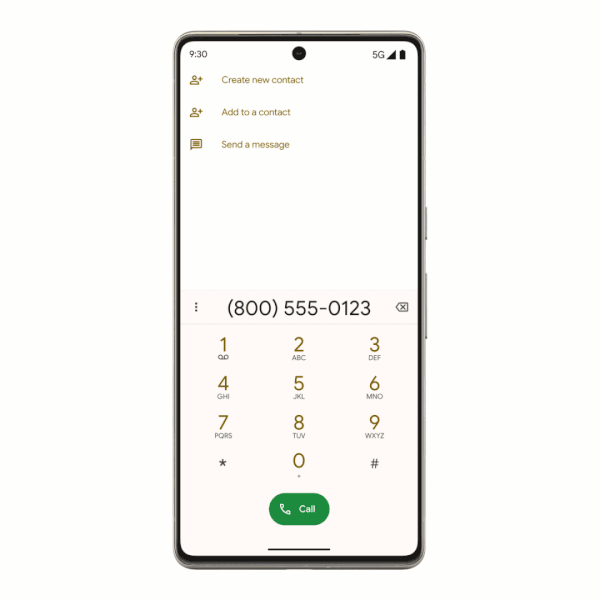
And, of course, you can't forget Pixel's best kept secret: call screening. Everyone gets spam calls and texts and it's incredibly annoying. Google's impressive call screening AI engine does away with all that by helping screen calls before they even come in. But what about the few that do bypass the call screening filter? You can just have Google Assistant answer for you, so you don't ever have to worry about talking to a telemarketer again.
Better yet, this screening functionality is extending to spam texts, as well, further enhancing Google Messages' ability to automatically filter spam throughout the day.
Did you catch Google's presentation on its new photo tech in the Pixel 7 and Pixel 7 Pro? It builds upon what Google introduced in last year's Pixel 6 with Face Unblur and Motion Mode and it's seriously impressive looking. Photo Unblur is a new trick up Tensor G2's sleeve that lets it analyze any photo in your Google Photos library — yes, even ones that are taken from other smartphones or just plain old cameras — and attempt to "unblur" them the way the Pixel can unblur faces in photos it takes.
The results, at least based on early impressions of ours plus what Google showed off yesterday, are nothing short of amazing. While it's sure to not work with every single blurry photo you've ever taken — there is a limit to AI reconstruction of an image — the ability for Google to take a blurry photo and turn it into something far more attractive and usable feels nothing short of magic.


